
MAY 2023 - VOL 84 | NO. 3 The Voice for Missouri Outdoors
FEDERATION
CONSERVATION
PRESERVING OUR CONSERVATION HERITAGE
For more than eighty-seven years, the Conservation Federation of Missouri (CFM) has served as “The Voice for Missouri Outdoors.” Join in our efforts to secure our stronghold as advocates for our state’s wildlife and natural resources by becoming a dedicated member of our Founders Circle.

Your contribution will play an influential role in preserving Missouri’s rich outdoor heritage.
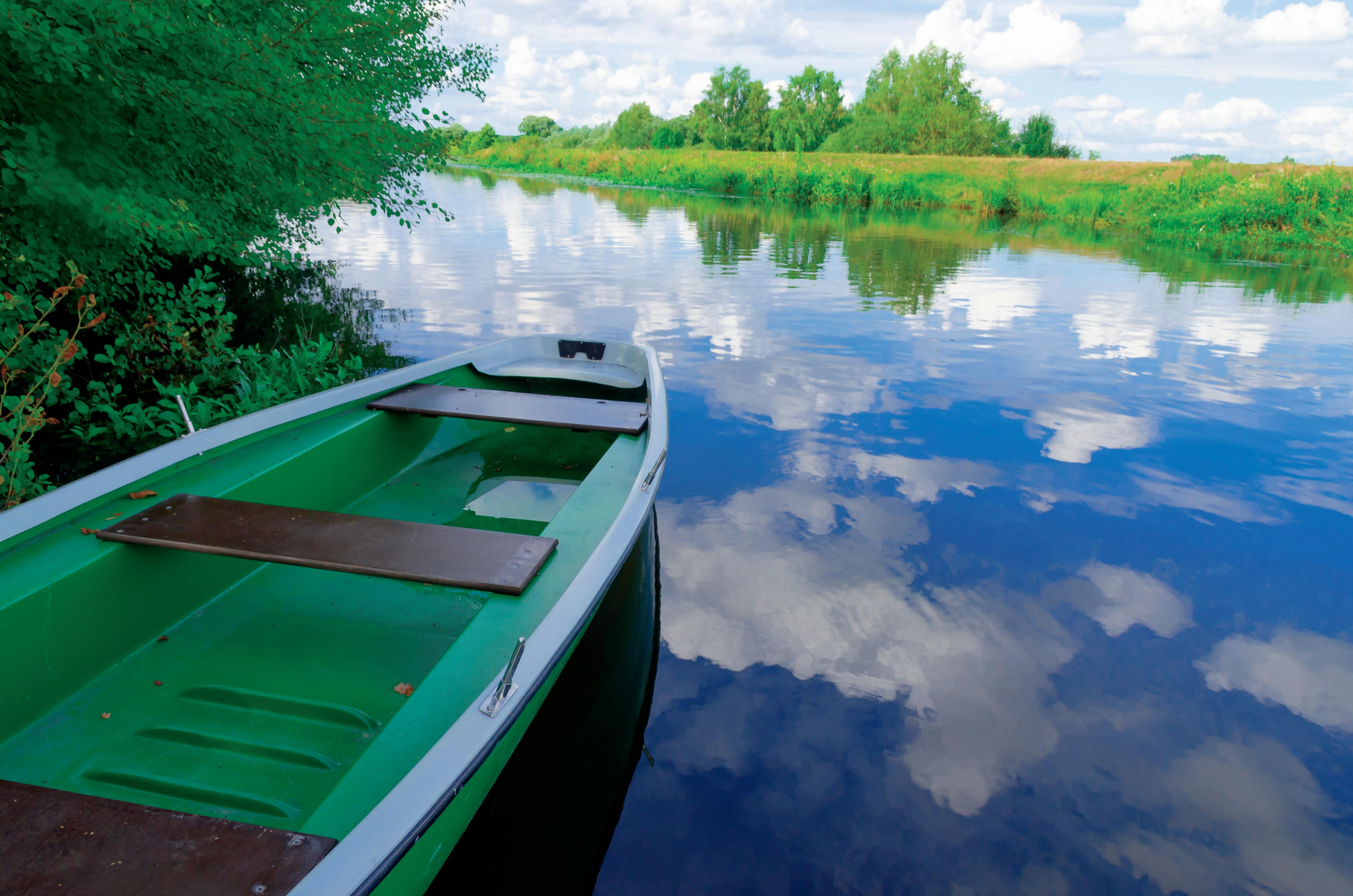
Each year, earnings from the endowment will be used to support CFM’s education and advocacy efforts. Special recognition will be given to those who reach each level of giving. Additionally, memberships will be recognized at our annual Convention.
Make your contribution today, to preserving our state’s conservation legacy.
FOUNDERS CIRCLE For more information contact Michelle at 573-634-2322 Ext. 104 or mgabelsberger@confedmo.org Founders Circle Levels Bronze - $5,000 to $9,999 Silver - $10,000 to $34,999 Gold - $35,000 to $74,999 Diamond - $75,000 or More Bronze Level Zach Morris-2022 David Urich-2022
Get Out and Enjoy The Spring
It’s time to get outside and enjoy mother nature and all that the great outdoors have to offer this time of year. Join me and go out of doors, and enjoy what matters most to every one of us: family, fun, and being outside. Spring certainly gives me a sense of renewal, as we shake off the winter blues and start to see the beauty of our flora and fauna as they begin to emerge.
At the recent 14th Annual Governor's Youth Turkey Hunt in April, it was a great opportunity to see the future generations that will be charged with conserving our precious natural resources to learn the basics of turkey hunting, calling, safety and much more. These youth hunters who have never harvested a turkey before were taught by dedicated landowners, guides and citizens that took time out of their busy schedules to help CFM and NWTF pull off yet another successful event.

The day before the hunt, we spent time at the range with young hunters, patterning their shotguns, learning how to call turkeys, positively identifying their target, and other essential turkey hunting techniques. The parents, youth and guides soaked up every bit of information from MDC and NWTF staff. Before departing for their turkey camp with their guides, we went to the Governor's mansion for a reception. During the hunt, several of the youth were able to bag a turkey, including my nephew, Walker Jeremy. We had a hunt that we will never soon forget.
Thanks to each of our affiliates and members that came to our Conservation Day at the Capitol on April 5th. It was an amazing day celebrating our advocacy efforts in the Capitol. A huge shout out to Shags and Trevor from 96.7 KCMQ for telling our message far and wide on the airwaves. We also had a Bald Eagle from World Bird Sanctuary, we honored our Legislator of the Year Representative Bruce Sassmann, and met with legislators to talk about conservation issues and much more.
Thanks to everyone that has engaged with their elected officials again this year during the legislative session, which will end on Friday, May 12th. We have once again made powerful strides in defeating, what could have been some very detrimental bills. We now turn to pass Recovering America’s Wildlife Act in Washington D.C. Please go to our webpage to take action now: https:// confedmo.org/rawa/
In closing, It was great to see so many people at the 87th Annual Convention of CFM. Take a look at our recap from this year’s annual event starting on page 20. If you couldn’t make it this year, I truly hope you can join in to support CFM and be a part of the “Voice for Missouri Outdoors”. Our staff, board, volunteers and so many others truly couldn't have been such a great convention without all working together. Thanks for all you do for our conservation efforts in Missouri.
Yours in Conservation,
Tyler Schwartze CFM Executive Director, Editor
Director’s Message
MAY - 2023 3
Tyler is pictured with his nephew Walker Jeremy, who harvested his first turkey on the opening day of youth firearms season in Missouri. (Photo: Todd Jeremy)
OFFICERS
Zach Morris - President
Bill Kirgan - President Elect
Ginny Wallace -Vice President
Benjamin Runge - Secretary
Bill Lockwood - Treasurer
STAFF
Tyler Schwartze - Executive Director, Editor
Micaela Haymaker - Director of Operations
Michelle Gabelsberger - Membership Manager
Nick Darling - Education and Communications Coordinator
Joan VanderFeltz - Administrative Assistant
Emma Kessinger - Creative Director
ABOUT THE MAGAZINE
CFM Mission: To ensure conservation of Missouri’s wildlife and natural resources, and preservation of our state’s rich outdoor heritage through advocacy, education and partnerships.




Conservation Federation is the publication of the Conservation Federation of Missouri (ISSN 1082-8591). Conservation Federation (USPS 012868) is published bi-monthly in January, March, May, July, September and November for subscribers and members. Of each member’s dues, $10 shall be for a year’s subscription to Conservation Federation Periodical postage paid in Jefferson City, MO and additional mailing offices.

Send address changes to:
Postmaster
Conservation Federation of Missouri 728 West Main
Jefferson City, MO 65101
FRONT COVER
This was taken at Johnson Shut-ins State Park in Reynolds County by Matt Miles using a Nikon D7100 camera and Nikkor 10 mm lens.
A Talk With Dad Rutcation Fishing for Freedom Silence, Sound, Noise Are You The Host With The Most? My First Shotgun Last of The Pack Why Conservation Matters Water Quality Monitoring on Jordan Creek Capt. Scott's Raccoon CONTENTS Features Events Schedule CLC Convention Recap Annual Convention Recap Clay Shoot Fly Fishing Tools CWD News 9 18 20 25 49 57 Highlights Conservation Federation May 2023 - V84 No. 3
4 CONSERVATION FEDERATION Director's Message President's Message Life Members Affiliate Spotlight Agency News 3 8 11 14 36 Departments 42 30 44 28 30 34 42 44 46 52 54 60 62 62
Thank you to all of our Business Partners.

Platinum
Gold
Bushnell
Doolittle Trailer
Enbridge, Inc.
Silver
Custom Metal Products
Forrest Keeling Nursery
Learfield Communication, Inc.
Lilley’s Landing Resort & Marina
Bronze
Association of Missouri Electric Coop.
Black Widow Custom Bows, Inc.
Burgers’ Smokehouse
Central Electric Power Cooperative
Drury Hotels
Iron
Bass Pro Shops (Independence)

Bee Rock Outdoor Adventures
Blue Springs Park and Recreation
Brockmeier Financial Services
Brown Printing
Cap America
Central Bank
Community State Bank of Bowling Green
G3 Boats
MidwayUSA
Pure Air Natives
Redneck Blinds
Rusty Drewing Chevrolet
Roeslein Alternative Energy, LLC
Missouri Wildflowers Nursery
Mitico
Quaker Windows
Simmons Starline, Inc.
St. James Winery
Gray Manufacturing Company, Inc.
HMI Fireplace Shop
Hodgdon Powder Company, Inc.
Missouri Wine & Grape Board
NE Electric Power Cooperative, Inc.

NW Electric Power Cooperative, Inc.
Ozark Bait and Tackle

Williams-Keepers LLC
Woods Smoked Meats
Dickerson Park Zoo
Farmer’s Co-op Elevator Association
Gascosage Electric Cooperative
General Printing Service
GREDELL Engineering Resources, Inc.
Heartland Seed of Missouri LLC
Hulett Heating & Air Conditioning
Kansas City Parks and Recreation
Lewis County Rural Electric Coop.
Missouri Native Seed Association
Scobee Powerline Construction
Sprague Excavating
Tabor Plastics Company
Truman’s Bar & Grill
United Electric Cooperative, Inc.
Your business can benefit by supporting conservation. For all sponsorship opportunities, call (573) 634-2322.
MAY - 2023 5
Business Partners
Mission: To ensure conservation of Missouri’s wildlife and natural resources, and preservation of our state’s rich outdoor heritage through advocacy, education and partnerships.



In 1935, conservationists from all over Missouri came together to form the Conservation Federation of Missouri (CFM) with the purpose to take politics out of conservation. The efforts of our founders resulted in the creation of Missouri's non-partisan Conservation Commission and the Missouri Department of Conservation (MDC). Since then, CFM has been the leading advocate for the outdoors in Missouri.
Partnerships
Over 100 affiliated organizations

Share the Harvest Corporate & Business Partnerships

State & Federal Agency Partnerships
National Wildlife Federation Affiliate


Operation Game Thief

Operation Forest Arson

David A Risberg Memorial Grants

Missouri Stream Team
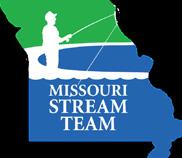
Education
Conservation Leadership Corps

Missouri Collegiate Conservation Alliance

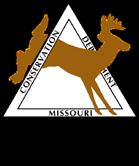
Confluence of Young Conservation Leaders
Affiliate Summit
Scholarships for youth and students
Governor’s Youth Turkey Hunt
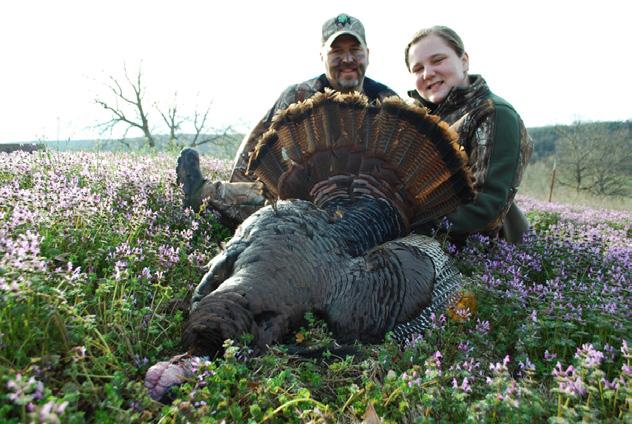
National Archery in the Schools Grants

Conservation Federation Magazine
Advocacy
Legislative Action Center

Resolutions to lead change
Natural Resource Advisory Committees
Conservation Day at the Capitol Staff and members testify in hearings for conservation and natural resources

Young Professionals
"The Voice for Missouri Outdoors"
Ways You Can Support CFM

Membership

Support our efforts to promote and protect conservation and natural resources in our state Members will receive our magazine six times a year, event information, our bi-weekly enewsletter, and the opportunity to grow our voice







Affiliate Membership
CFM provides the platform for a diverse group of organizations to have their conservation voices be heard Affiliates have the opportunity to apply for grants, receive educational training and promote the mission of their organization.




Scholarships and Grant Support
CFM provides scholarships to graduates and undergraduates
We also provide grant funds to youth education programs and to affiliate projects Contributing will help future generations initiate boots on the ground projects
Life Membership
Become a life member for $1,000 Life memberships are placed in an endowment fund that allows us to continue our work in perpetuity
Business Partnerships
Business partners will enjoy recognition in each magazine issue along with opportunities to reach and engage with our active membership Ask us about our different Business Partnership levels.
All of our events have raffles with both silent and live auctions. The contributions of in-kind products and services not only assists in raising funds for conservation, but also promote the businesses that support CFM

1935 1936 1940 1944 1946 1960 1974 1984 1989 1958 1969 1976 1991 1992 2002 2007 1982 2006 2009 2016 State Wildlife and Forestry Code published First deer season since 1937 First hunter safety program formed Parks and Soils Sales Tax passed Operation Forest Arson formed Conservation Federation of Missouri 728 West Main St, Jefferson City, MO 65101 Phone: (573) 634-2322 ~ Email: info@confedmo.org www.confedmo.org Stream Teams formed Missouri voters renewed Parks and Soils Sales Tax by 70.8% Outdoor Action Committee formed Amendment 4 created Missouri's non-political Conservation Commission Operation Game Thief formed
Become a Member today! CFM Celebrates 85 years
Urban fishing program formed in St Louis; first in the nation Missouri Department of Natural Resources formed Missouri National Archery in the Schools Program formed Parks and Soils Sales Tax renewed by voters by the highest percentage to date (80%) 2020
Federation of Missouri began Wildlife and Forestry Act passed First turkey season in 23 years Design for Conservation Sales Tax passed Share the Harvest formed Conservation Leadership Corps formed
Description Individual
Individual
Individual
Youth/Student Individual
Conservation
Name: E-mail: Phone: Address: Credit Card #: Exp. Date: Price $35.00 $60.00 $100.00 $20.00 $1,000.00
Supporter
Advocate
Sustaining
Lifetime
Event Sponsorship and Product Donation
Join online confedmo.org/join
Nature in Your Own Backyard
I’m sure right now, many of us, including me, are thinking about gardening. As spring days lengthen and warm into early summer, it’s the perfect time to start growing something, whether in a vegetable garden or a flower garden. But have you ever thought about gardening for wildlife?
I’ve written about this before, but more and more Missourians are looking for ways to connect with nature in their own backyard, so I thought I would write about it again. Gardening for wildlife is easier than you think, and it can result in a beautiful addition to your property. Not only that, but it is extremely rewarding to see native wildlife come by and use the habitat you grew for them. You can even certify your property as a wildlife habitat through the National Wildlife Federation! Here are a few tips:
The key to a wildlife garden or pollinator patch is to plant native plants. Many pollinator species depend on certain native plants for part of their life cycle. The monarch butterfly, for example, needs milkweed to feed on as a caterpillar. Many more butterflies rely on particular species to reproduce, and planting these host plants can be a great way to see more butterflies while helping keep populations steady. Native wildflowers also provide food and cover for wildlife. These benefits can be enhanced by installing a bird feeder, bird house, or insect house, but there really is no substitute for native plants when it comes to wildlife habitat.
Native landscaping can also be a great way to utilize wet areas that can be difficult to maintain. Buttonbush and rose mallow are larger shrubs with beautiful blooms that thrive in wet areas. Swamp milkweed would also be a good choice for these areas, and its brilliant pink flowers are a great source of nectar for many pollinators.
There are so many varieties of native wildflowers in Missouri, you can undoubtedly find some to fit your space. Whether you want a small, formal looking garden with great curb appeal or you have a little more space to grow some native trees and shrubs, you can find a native plant variety to fit your needs. The Grow Native! program is a great resource for you to help learn which plants will work best on your property. You can find planting guides, vendors, and more at grownative.org
Planting a wildlife garden with native plants won’t just attract pollinators, but you may start to see other wildlife as well. Birds and mammals eat seeds from native plants, and lots of small critters may find shelter within a dense pollinator patch. If you provide a water source, you can ensure that many types of wildlife can find what they need on your property.
For the ambitious gardener, a water garden can add some beautiful habitat and serve as a great water source for many different species. Some aquatic plants produce beautiful flowers that will attract a range of pollinators. Whatever your water source, be sure it has gently sloped edges so any wildlife that might fall in can escape. For deeper water sources, you can lean a rock or log against the edge to create a ramp that can be used by wildlife to climb out.
There are many ways to provide wildlife habitat on your property, even in a small space. However you go about it, be sure to keep an eye out. You’ll be amazed at what you might see. At my house, I get to watch a beautiful array of insects and birds visit my pollinator patch all summer long.
I hope you can find some time to get out and bring a little bit of nature home this summer. However you enjoy the outdoors this year, maybe I’ll see you out there.

President’s Message 8 CONSERVATION FEDERATION
Zach Morris President, CFM
These are just a few of the beautiful pollinators that stop by my wildlife garden all summer long.
(Photo: Zach Morris)
2023 Events Schedule

87th Annual Convention- February 21 - 26
Let your voice be heard at the Annual Convention. The event will include meetings, awards, auctions, and so much more. Held at the Lake of the Ozarks.
Conservation Day at the Capitol- April 5
Join conservationists from across Missouri on the radio for a day of celebrating and supporting conservation and natural resources. The broadcast will air from 6 am to 10 am on 96.7 FM or KCMQ.com.
Pull for Conservation: Northwest- April 15
Join CFM for the 7th annual Northwest clay shoot at Boot Hill Shooting Ground in Hamilton.
CFM Life Member Event- June 3
CFM will be hosting its 2nd annual life member only event in Rhineland
Conservation Federation Banquet: Columbia- July 13
Fish or kayak then eat a fantastic meal while supporting CFM at Bass Pro Shops in Columbia.
Pull for Conservation: Central- August 12
Take your best shot at the 17th annual Central clay shoot at Prairie Grove Shotgun Sports.
Affiliate Summit- September 7 & 8

CFM affiliate organizations are invited to network and learn with fellow professionals.
Conservation Federation Online Auction- October 11 - 20
Enjoy a fun and interactive online auction with many great trips and prizes
Holiday Online Auction- December 4 - 14
Bid on many exciting items just in the time for the holidays.
Event dates are subject to change. Please visit www.confedmo.org or follow us on social media for the most up to date schedule




Why I Became a Life Member of CFM: Kim Hainsfurther
Conservation is part of my DNA. I grew up in rural Missouri. Each season brought the beauty and gifts of nature. From spring’s first blossoms to summer’s birdsongs. Fall skies punctuated with migrating geese before winter’s snows.
As I matured, I saw that our family’s nursery business bonded us with the land. The season’s cycles brought both bounties and challenges. But even in the challenges were gifts of opportunity. Nature shared her secrets and allowed us to partner with her in restoring the earth’s ecosystems.
Connecting with nature has been a way of life for my family and for me. And like my family, I'm proud to live in Missouri, the foremost state for conservation.
But with that pride comes responsibilities. Our family believes they have a responsibility to leave the earth better than we found it. Our business, Forrest Keeling Nursery, has earned a reputation for commitment to conservation.

Each day, we strive to live out our mission, 'restoring the earth's ecosystems one tree at a time'. Second, we have a responsibility to support organizations like the Conservation Federation of Missouri. I'm proud to be a CFM life member.
In Memory

In Memory of Gene Kelly
Mr. and Mrs. James Loveless
In Memory of Alma Cook
Mr. and Mrs. Mervin Wallace
Mr. and Mrs. Edward Gruetzemacher
Mr. and Mrs. Wayne Benoit
In Memory of Charles Davidson
Mr. Gary Van De Velde
Mr. and Mrs. Richard Ash, Jr.
In Memory of Evelyn Schallon
Mr. and Mrs. Gery Gremmelsbacher
Mr. and Mrs. James Butler
Ms. Mary Krelo
Ms. Lona Lewis
Mr. and Mrs. Richard Ash, Jr.
In Memory of Lou Satterfield
Mr. and Mrs. Bill Kirgan
In Memory of Marty & Joel Vance
Ms. Candy LeCuru
Mr. Lee Brown, Cosmopolitan International Jefferson City Club
Linnea Haultman
In Memory of Ruth M. Breuer
Mr. and Mrs. Richard Ash, Jr.
In Memory of Sharon A. Hale
Mr. and Mrs. Richard Ash, Jr.
In Memory of Dennis E. Marcus
Mr. and Mrs. Richard Ash, Jr.
In Memory of Gary E. Engelmeier
Mr. and Mrs. Richard Ash, Jr.
10 CONSERVATION FEDERATION Member News
(Photo: Spring Hansen)
LIFE MEMBERS OF CFM
Charles Abele
* R. Philip Acuff
* Duane Addleman
* Nancy Addleman
Tom Addleman
Nancy Addleman
* Michael Duane Addleman
James Agnew
Carol Albenesius
Craig Alderman
* Allan Appell
Victor Arnold
Bernie Arnold
Richard Ash
Judy Kay Ash
Carolyn Auckley
J. Douglas Audiffred
Ken Babcock
Bernie Bahr
Michael Baker
* James Baker
Dane Balsman
Lynn Barnickol
Jamie Barton
Michael Bass
Robert Bass
Don Bedell
David F. Bender
Rodger Benson
Leonard Berkel
Barbi Berrong
Jim Blair
John Blankenbeker
Andy Blunt
Jeff Blystone
Kim Blystone
Glenn Boettcher
Arthur Booth
* Dale Linda Bourg
Stephen Bradford
Marilynn Bradford
Robin Brandenburg
Mark Brandly
Kathie Brennan
Robert Brinkmann
* Scott Brundage
Bill Bryan
Alan Buchanan
Connie Burkhardt
Dan Burkhardt
Brandon Butler
Randy Campbell
Brian Canaday
Dale Carpentier
* Glenn Chambers
Bryan Chilcutt
Ed Clausen
* Edward Clayton
* Ron Coleman
Denny Coleman
Rhonda Coleman
Liz Cook
Mark Corio
* Bill Crawford
Andy Dalton
DeeCee Darrow
Ryan Diener
Joe Dillard
Tim Donnelly Cheryl Donnelly
Ron Douglas
Chuck Drury
* Charlie Drury
Tom Drury
Ethan Duke
Mike Dunning
William Eddleman
John Enderle
Theresa Enderle
Joe Engeln
Marlin Fiola
* Mary Louise Fisher
Howard Fisher
Andrew Fleming
Matt Fleming
Howard Fleming
Sara Fleming
Lori Fleming
Paula Fleming
* Charles Fleming
Bob Fry
Manley Fuller
David Galat
Gene Gardner
Matt Gaunt
Jason Gibbs
Timothy Gordon
Blake Gornick
David Graber
Tim Grace
Jody Graff
Richard & Sally Graham
Joseph Gray
Tyler Green
Jason Green
Gery Gremmelsbacher
Debbie Gremmelsbacher
Jason Gremmelsbacher
Bernie Grice Jr.
Mark & Kathy Haas
Tom & Margaret Hall
Christopher Hamon
* Deanna Hamon
J. Jeff Hancock
Herman Hanley
Keith Hannaman
Elizabeth Hannaman
John Harmon
* Milt Harper
Jack Harris
David Haubein
Jessica Hayes
* Susan Hazelwood
Mickey Heitmeyer
Loring Helfrich
* LeRoy Heman
* Randy Herzog
Bill Hilgeman
Jim Hill
Mike Holley
Rick Holton
CW Hook
* Allan Hoover
John Hoskins
Todd Houf
* Mike Huffman
Larry Hummel
* Patricia Hurster
Kyna Iman
Jim Jacobi
Aaron Jeffries
Robert Jernigan
Jerry Jerome
Roger & Debbie Johnson
* Don Johnson
* Malcolm Johnson
* Pat Jones
Steve Jones
John Karel
Thomas Karl
* Duane Kelly
Cosette Kelly
Junior Kerns
Todd Keske
Robert Kilo
* Martin King
Bill Kirgan
* Judd Kirkham
* Ed Kissinger
Sarah Knight
TJ Kohler
Jeff Kolb
Chris Kossmeyer
Chris Koster
Dan Kreher
Carl Kurz
* Ann Kutscher
Larry Lackamp
Kyle Lairmore
* Jay Law
* Gerald Lee
Debra Lee
Mark Lee
Randy Leible
* Joel LeMaster
* Norman Leppo
* John Lewis
Bill Lockwood
Leroy Logan
Christine Logan - Hollis
Bob Lorance
Ike Lovan
Wayne Lovelace
Kimberley LovelaceHainsfurther
Jim Low
Mark Loyd
Emily Lute-Wilbers
Martin MacDonald
Michael Mansell
Steve Maritz
Danny Marshall
John Mauzey
Bill McCully
Chip McGeehan
Teresa McGeehan
Nathan "Shags" McLeod
Jon McRoberts
Richard Mendenhall
Tom Mendenhall
Donna Menown
Cynthia Metcalfe
Walter Metcalfe
Larry Meyer
Stephanie Michels
Mitchell Mills
Joshua Millspaugh
Davis Minton
Lowell Mohler
John Moore, Jr.
Johnny Morris
Zachary Morris
John Mort
Leanne Mosby
Steve Mowry
Diana Mulick
David Murphy
* Dean Murphy
Richard Mygatt
Steve Nagle
Rehan Nana
J. Roger Nelson
Jeremiah (Jay) Nixon
Gary Novinger
Frank & Judy Oberle
Larry O'Reilly
Charlie & Mary O’Reilly
Beth O'Reilly
Anya O'Reilly
Jeff Owens
Austin Owens
Sara Parker Pauley
Scott Pauley
Randy Persons
Edward Petersheim
Albert Phillips
Jan Phillips
Glenn & Ilayana Pickett
Jessica Plaggenberg
Becky Plattner
Jerry Presley
Albert Price
Nick Prough
Kirk Rahm
Kurtis Reeg
John Rehagen
David & Janice Reynolds
Carey Riley
Kevin Riley
Mike Riley
Dana Ripper
John Risberg
Ann Ritter
Charles Rock
Derrick Roeslein
Rudy Roeslein
Charles Rogers
Kayla Rosen
Gerald Ross
Pete Rucker
Tyler Ruoff
Benjamin Runge
William Ruppert
Tom Russell
Jacob Sampsell
Bruce Sassmann
Jan Sassmann
Frederick Saylor
Michael Schallon
Mossie Schallon
* Evelyn Schallon
Thomas Schlafly
Pamela Schnebelen
Donald & Deb Schultehenrich
Tyler Schwartze
* Ronald Schwartzmeyer
Timothy Schwent
Travis W. Scott
George Seek
Arlene Segal
* E. Sy Seidler
* Sara Seidler
Anita Siegmund
Douglas Smentkowski
Gary & Susanna Smith
Zachary Smith
* M.W. Sorenson
* Ed Stegner
Jeff Stegner
Everett Stokes
William Stork Jr.
Winifred Stribling
Norm Stucky
Mary Stuppy
* Mark Sullivan
Jacob Swafford
Jim Talbert
Norman Tanner
Travis Taylor
Richard Thom
Don Thomas
Tim Thompson
* Jeff Tillman
Robert Tompson
Mike Torres
Matt Tucker
David Urich
Jennifer Urich
Alex Uskokovich
Gary Van De Velde
Barbara vanBenschoten
Lee Vogel
Albert Vogt
Frank Wagner
Ray Wagner
* Julius Wall
Ginny Wallace
Mervin Wallace
Randy Washburn
Mary Waters
Henry Waters, III.
Daniel Weinrich
Michael Weir
Robert Werges
Evelyn Werges Bennish
Tom Westhoff
Gary Wheeler
Georganne Wheeler Nixon
Mark Williams
Dennis Williams
Dr. Jane Williams
Stephen Wilson
Michael Wilson
Laurie Wilson
Jonathan Wingo
Jon R. Wingo
Michael Wiseman
Daniel Witter
Brenda Witter
* Addie Witter
Owen Witter
Dick Wood
Howard Wood
Joyce Wood
Nicole Wood
Charles M. Wormek
Brad Wright
Suzanne Wright
David Young
Judy Young
Dan Zekor
Daniel Zerr
Jim Zieger
Robert Ziehmer
Emily Ziehmer
Lauren Ziehmer
Colton Zirkle
Ethan Zuck
Guy Zuck
Mark Zurbrick
*Deceased
Member News
MAY - 2023 11


CZ-USA.COM Designed specifically for small-base centerfire calibers, it is a true micro-length Mauser action. With controlled-round feed, a detachable single-stack magazine, a cold-hammer-forged barrel, integral 16mm dovetails and our renowned single set trigger, many people think it’s the ultimate small-caliber platform. OLD SCHOOL CRAFTSMANSHIP
CONTROLLED-ROUND
SINGLE SET TRIGGER COLD-HAMMER-FORGED BARREL TRUE MICRO-LENGTH MAUSER-STYLE ACTION DETACHABLE MAGAZINE CZ 527 AMERICAN
16MM SCOPE DOVETAILS
FEED
Committed to Community & Conservation

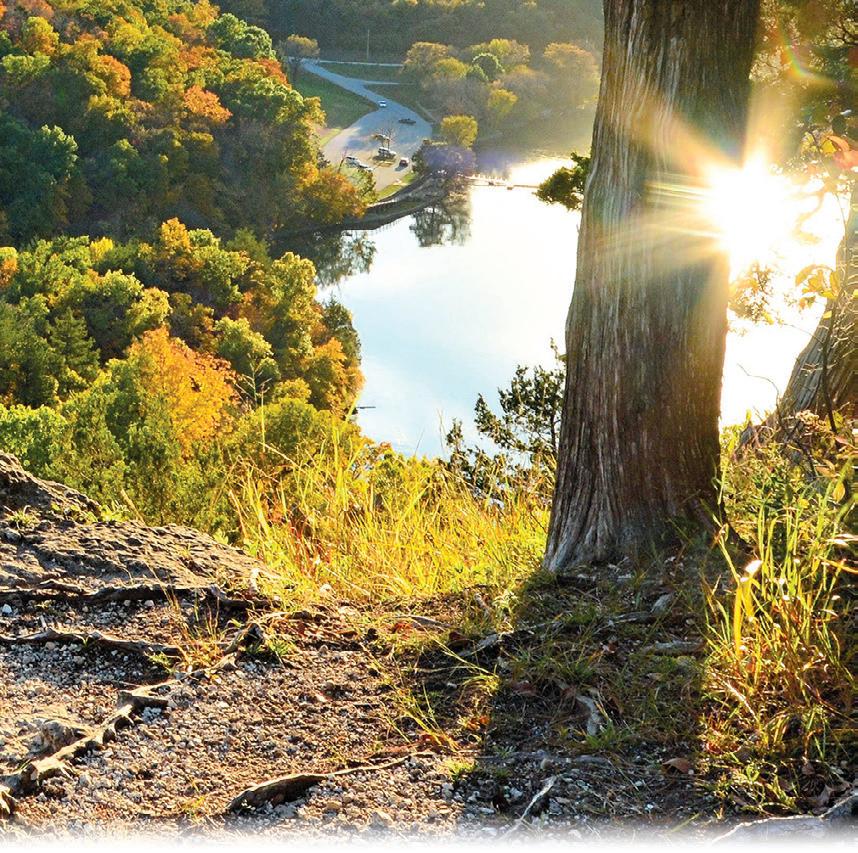


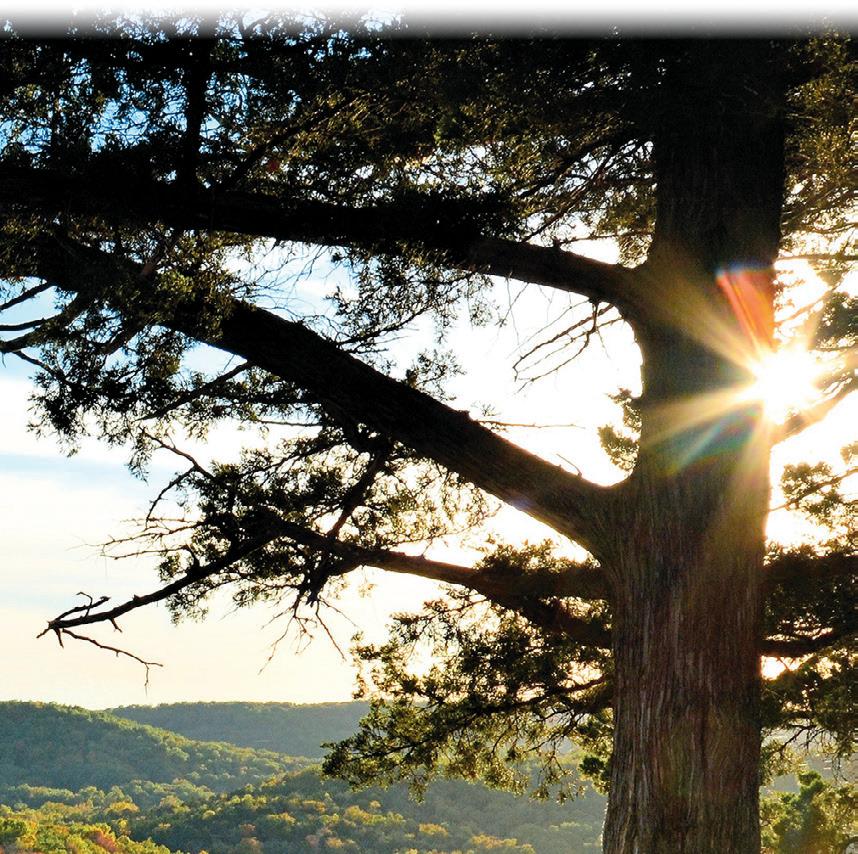

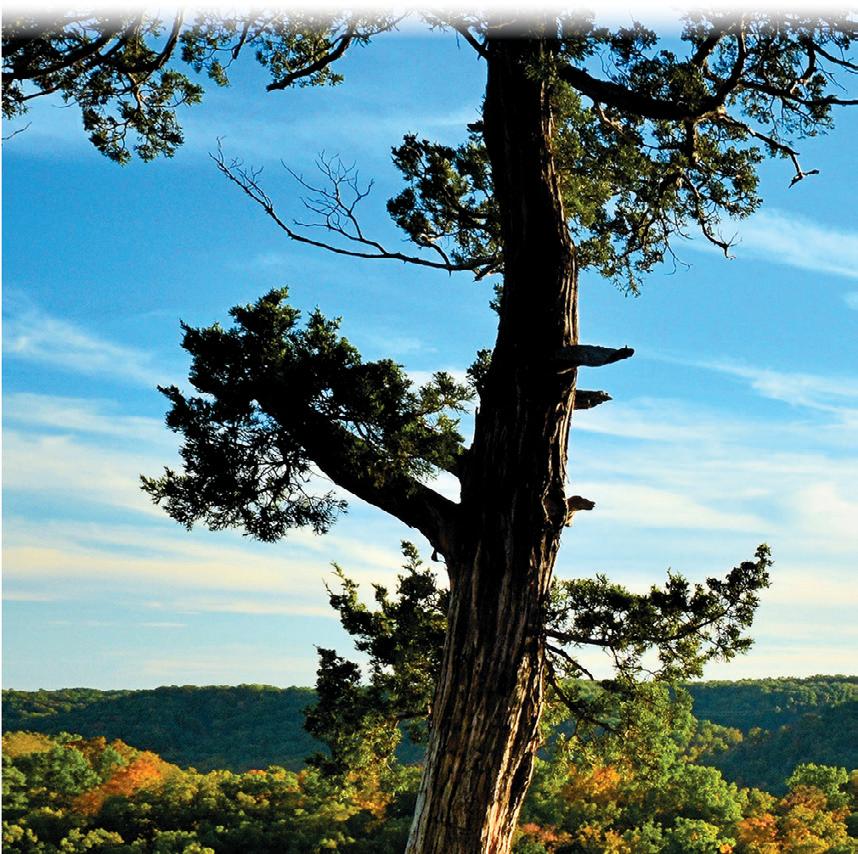
Owned by the members they serve, Missouri’s electric cooperatives do more than provide reliable and affordable electricity. They are active in their communities, concerned for the wellbeing of their neighbors and devoted to the rural way of life that makes the Show-Me State a special place to live, work and play. Missouri’s electric cooperatives are dedicated to protecting the land, air and water resources important to you and your quality of life. Learn more at www.amec.coop.
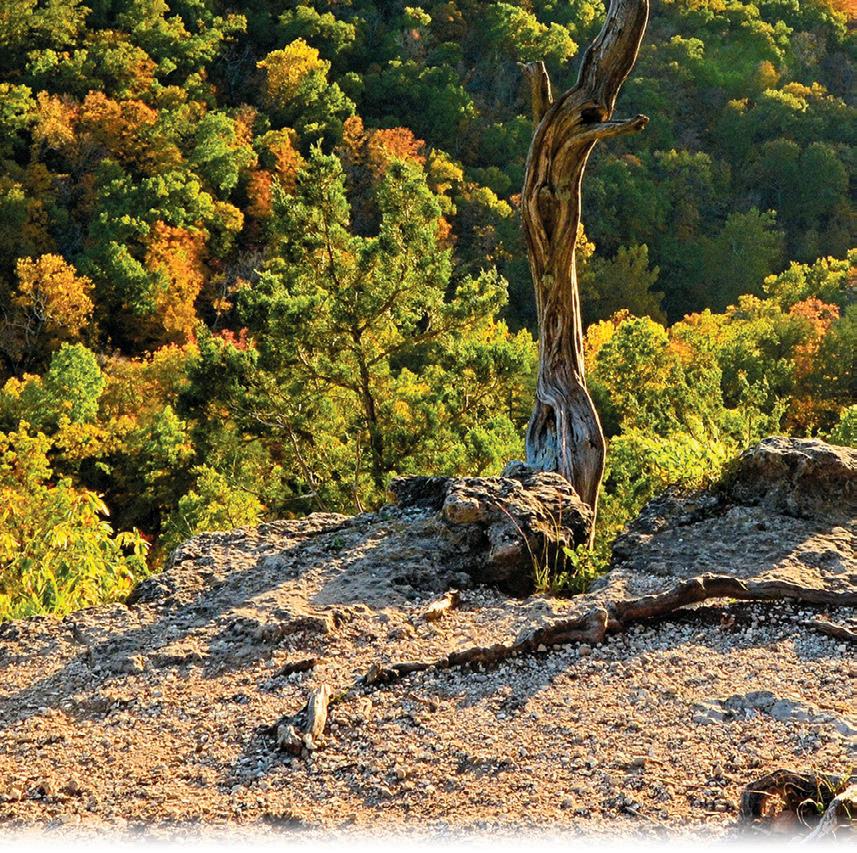
MAY - 2023 13
The Ozark Chinquapin Foundation

The Ozark Chinquapin Foundation (OCF) was founded in 2007 by Steve Bost who recognized the importance of Ozark chinquapin, and the impact its loss imposed upon wildlife, humans, and forest communities throughout the tree’s native range. Through science-based research and breeding, the OCF is fulfilling their mission to save and restore the Ozark chinquapin tree.
The Ozark chinquapin tree is a native species of chestnut prized for its delicious nuts and rot-resistant wood and highly esteemed by Native Americans and early settlers for its consistent crop. The nuts are rich in protein and carbohydrates, and favored by turkey, deer, and bears. The tree began disappearing from the Ozarks around the late 1940s because of a fungal disease, known as chestnut blight, that was introduced from Asia on imported chestnuts around the turn of the century. The tree is now listed as a Species of Conservation Concern in Missouri.
Steve knew that rescuing the Ozark chinquapin would begin with locating surviving trees with natural genetic resistance to blight— a phenomenon that occurs in wild stands where high levels of genetic variation exist. Steve set out finding these rare blight resistant trees, and when private landowners heard about what he was doing, they began helping him, and many more joined in along the way. L-A-D Foundation granted use of their land on Pioneer Forest for the OCF to set up research test plots to carry out a breeding program where Ozark chinquapin with improved resistance to blight are developed through cross-pollination and seed is distributed every year to hundreds of OCF members, and partners across the native range.
In recent years, the OCF began establishing restoration plantings at various sites on National, State, and Private forests. They are making tomorrow’s Ozark chinquapin today—to leave a lasting legacy for wildlife and our families to enjoy for years to come. If you would like to learn more, or plant some of your own Ozark chinquapin, visit their website ozarkchinquapinmembership.org.

14 CONSERVATION FEDERATION Affiliate Highlights
Top - Steve Bost. (Photo: Zach Smith)
Bottom - Ozark chinquapin. (Photo: Steve Bost)
Affiliate Organizations
Anglers of Missouri
Association of Missouri
Electric Cooperatives
Bass Slammer Tackle
Burroughs Audubon
Society of Greater Kansas City
Capital City Fly Fishers
Chesterfield Citizens
Committee for the Environment
Columbia Audubon Society
Conservation Foundation of Missouri Charitable Trust
Deer Creek Sportsman Club
Duckhorn Outdoors Adventures
Festus-Crystal City Conservation Club
Forest and Woodland
Association of Missouri
Forest Releaf of Missouri
Friends of Rock Bridge Memorial State Park
Gateway Chapter Trout Unlimited
Greater Ozarks Audubon Society
Greenbelt Land Trust of Mid-Missouri
Greenway Network, Inc.
James River Basin Partnership
L-A-D Foundation
Lake of the Ozarks Watershed Alliance
Land Learning Foundation
Legends of Conservation
Little Blue River Watershed Coalition
Magnificent Missouri
Mid-Missouri Outdoor Dream
Mid-Missouri Trout Unlimited
Midwest Diving Council
Mississippi Valley Duck Hunters Association
Missouri Association of Meat Processors
Missouri Atlatl Association
Missouri B.A.S.S. Nation
Missouri Bird Conservation Initiative
Missouri Birding Society
Missouri Bow Hunters Association
Missouri Caves & Karst Conservancy
Missouri Chapter of the American Fisheries Society
Missouri Chapter of the Wildlife Society
Missouri Coalition for the Environment
Missouri Conservation Agents Association
Missouri Conservation Heritage Foundation
Missouri Conservation Pioneers
Missouri Consulting Foresters Association
Missouri Disabled Sportsmen
Missouri Ducks Unlimited- State Council
Missouri Environmental Education Association
Missouri Forest Products Association
Missouri Grouse Chapter of QUWF
Missouri Hunting Heritage Federation
Missouri Master NaturalistBoone's Lick Chapter
Missouri Master NaturalistGreat Rivers Chapter
Missouri Master NaturalistHi Lonesome Chapter
Missouri Master NaturalistMiramiguoa Chapter
Missouri Master NaturalistOsage Trails Chapter
Missouri Master NaturalistSpringfield Plateau Chapter
Missouri National Wild Turkey Federation
Missouri Native Seed Association
Missouri Outdoor Communicators
Missouri Park & Recreation Association
Missouri Parks Association
Missouri Prairie Foundation
Missouri River Bird Observatory
Missouri River Relief
Missouri Rock Island Trail, Inc.
Missouri Rural Water Association
Missouri Smallmouth Alliance
Missouri Society of American Foresters
Missouri Soil & Water Conservation
Society-Show-Me Chapter
Missouri Sport Shooting Association
Missouri State Campers Association
Missouri State Parks Foundation
Missouri Taxidermist Association
Missouri Trappers Association
Missouri Trout Fishermen's Association
MU Wildlife & Fisheries Science
Graduate Student Organization
Northside Conservation Federation
Open Space Council of the St. Louis Region
Outdoor Skills of America, Inc.
Ozark Chinquapin Foundation
Ozark Fly Fishers, Inc.
Ozark Land Trust
Ozark Riverways Foundation
Ozark Trail Association
Ozark Wilderness Waterways Club
Perry County Sportsman Club
Pomme De Terre Chapter Muskies
Quail & Upland Wildlife Federation, Inc.
Quail Forever & Pheasants Forever
River Bluffs Audubon Society
Rocky Mountain Elk Foundation
South Side Division CFM
Southwest Missouri Fly Fishers
St. Louis Audubon Society
Stream Teams United
Student Air Rifle Program
Tipton Farmers & Sportsman's Club
Tri-Lakes Fly Fishers
Troutbusters of Missouri
United Bow Hunters of Missouri
Watershed Conservation Corps
Wild Bird Rehabilitation
Wild Souls Wildlife Rescue Rehabilitation
Wonders of Wildlife
World Bird Sanctuary
Young Outdoorsmen United
MAY - 2023 15 Affiliate Highlights



Contact your local Shelter agent to insure your auto, home, life, farming, hunting & fishing gear. Find an agent near you at ShelterInsurance.com. Shelter Insurance® is a proud sponsor of Share the Harvest & the Conservation Federation. SEASON It’s Your
LEGISLATIVE ACTION CENTER
Act fast on issues that matter to you.

S T A Y I N F O R M E D . S I G N U P T O D A Y
V I S I T W W W . C O N F E D M O . O R G / L A C
C L I C K " S I G N - U P "
"Be The Voice For Missouri Outdoors"
CLC Convention Recap
On February 24th-26th, 2023 Students with the Conservation Leadership Corps (CLC) attended the Conservation Federation of Missouri's 87th annual convention at the Margaritaville Resort in Lake of the Ozarks. CLC is a program open to juniors in high school to seniors in college who have a vested interest in conservation. Each year, students have the opportunity to attend the convention after putting months of work into their resolutions. The goal of CLC is to provide students with a deeper connection to conservation while giving them a voice in conservation policy-making. Other than writing resolutions for the convention, students network with CFM affiliates and connect with likeminded students, all while gaining valuable communication and leadership skills.
Arriving on Friday, students took part in icebreaker and team-building activities. These activities help students get to know each other and develop leadership skills. Next, Deputy Directors of MDC and DNR spoke and gave students a chance to learn about future job opportunities and ask any questions they might have. At the Award Ceremony that evening, students were given scholarships and graduating students were awarded the Student Conservation Achievement Award. This is awarded to students with at least three years of service in CLC and who attended at least six CLC events.
Most of the time at convention is spent working on the resolution process. This includes editing resolutions at the resolutions committee meeting, preparing to present resolutions, and reading resolutions at the general assembly meeting. In the fall, students began writing resolutions on issues that were important to them. Between then and the convention students researched their topics, met with affiliate organizations, and continued refining their resolutions. Of the ten resolutions that passed the general assembly, five were submitted by CLC.
Continuing from last year's convention, there were six education sessions on Saturday including, archery, photography, pollinators, and relevancy education. A relatively new addition, these educational sessions foster interest in new topics. On Sunday, students took a trip to Ha Ha Tonka State Park. There they participated in an interpretive tour and hike.
Within CLC, I’ve had many amazing opportunities, from developing leadership and public speaking skills, to connecting with professionals in the natural resources field, and now as CLC President for the 2023 - 2024 term. This program is incredibly important, and I would like to thank all those who donated their time and money to make it happen. CLC gives young people a voice in conservation, and as long as the CLC students are attending the convention, the future of conservation is in safe hands.

18 CONSERVATION FEDERATION
News
Member
CLC students finished their exciting weekend with a tour of Ha Ha Tonka State Park. (Photo: Amber Edwards)
Owen Steins






Life Member C E L E B R A T I O N SATURDAY, JUNE 3, 2023, 4 PM - 8 PM VALENTINE HALL 197 HIGHWAY P, RHINELAND, MO 65069 Food & Drinks Join us for a good ol' fashioned BBQ pork steak with all the fixin's. Enjoy complimentary wine and beer from St. James Winery and Public House Brewing Co. Save the Date! Celebrate with us at our Second Annual Life Member Event. Enjoy food, drinks, activities, raffles, and fellowship. Free for Life and Founder Circle Members. RSVP Online at www.confedmo.org/events Call the CFM Office Additional tickets can be purchased for Non-Life Members for $30 each 573-634-2322 EXT. 104 CFM, 728 W. Main, Jefferson City, MO 65101 mgabelsberger@confedmo.org
Conservation Federation of Missouri's 87th Annual Convention
The Conservation Federation of Missouri (CFM) would like to thank everyone who made this year’s convention a huge success.

For the first three days of the Annual Convention, the Natural Resource Breakouts were held virtually from February 21st through February 23rd. On Friday, February 24th, and Saturday, February 25th, attendees met in-person at Margaritaville Resort at Lake of the Ozarks. On Friday, we celebrated our Conservation Achievement Awards. It was a beautiful evening filled with amazing people and emceed by Trevor Morgan and Nathan “Shags” McLeod from 96.7 KCMQ’s The Morning Shag. Our educational seminars held on Saturday ranged in topics from nature and macro photography, National Archery in the Schools Program, to birds from the Dickerson Zoo. The Annual Banquet was held Saturday evening with speakers Governor Jay Nixon and Miss Missouri along with an astonishing number of silent and live auction items. Attendees enjoyed the many opportunities to network and visit with conservation friends through-out the weekend. The Conservation Leadership Corps students gathered and continued their education of conservation in many various aspects for becoming the next generation of leaders through training and networking.
There were 10 Resolutions passed from the hard work of the Resource Advisory Committees, Resolutions Committee and the General Assembly. Everyone’s input is greatly appreciated during this very important process.
We would like to extend our sincere appreciation to all of our sponsors for their financial support. Those included: Bass Pro Shops, Conservation Foundation of Missouri Charitable Trust, Roeslein Alternative Energy, Ozark Bait and Tackle, National Wildlife Federation and Missouri Electric Cooperatives.


A special thank you goes out to all the volunteers for all of their hard work behind the scenes and to all those that brought auction items. We really couldn’t pull off such an amazing weekend without everyone’s help.
Thanks to those who traveled to share in the fun, fellowship and business of CFM again this year. We really appreciate your continued support of our organization.
20 CONSERVATION FEDERATION Member News
Top - The Annual Convention Affiliate Lunch. (Photo: CFM Staff) Bottom - Miss Missouri. (Photo: Clare Marie Kuebler)
2023 Resolutions
A critical activity performed by CFM is the monitoring of conservation and natural resource issues and the formulation of an organizational stance or position based on the best available information and/or science. Members and board supported resolutions are frequently developed as a means of expressing CFM support, opposition, recognition, or advice on a particular topic. CFM resolutions are one of the most powerful expressions of our opinion as a conservation organization. Resolutions were voted upon and approved at CFM's 87th Annual Convention on February 25th, 2023. These can be viewed online at https://confedmo.org/ listed-resolutions-through-the-years/
RESOLUTIONS
2023 - 1: Rescind Certain Regulations Governing the Hunting and Trapping of Furbearers (Big Game, Turkey and Furbearers)
2023 - 2: Conservation Federation of Missouri’s Position on CO2 Emissions (Environment and Ecology)
2023 - 3: Urge the Implementation of Bird-Safe Windows on Missouri College Campuses (Environment and Ecology)
2023 - 4: Encourage Ozark Chinquapin Restoration (Forest Resources and Management)
2023 -5: Adoption of the Community Health Index and Implementation of Corrective Action Plans for Remnant Prairie Management Entities (Grasslands and Prairies)
2023 - 6: Support for the Passage of the North American Grasslands Conservation Act (Grasslands and Prairies)
2023 - 7: Awareness for the Missouri Outdoor Recreational Access Program (Public/Private Lands)
2023 - 8: Oppose the Proposed Nexgen Silica Sand Mine in Ste. Genevieve County (Public/Private Lands)
2023 - 9: Support the America the Beautiful Initiative (Public/Private Lands)
2023 – 10: Support for Creation of a Missouri Small Game Hunting Challenge (Upland Wildlife)
Conservation Achievement Awards
The Conservation Federation of Missouri is pleased to announce the recipients of our Conservation Achievement Awards for 2022. These winners are Missourians who exemplify all that CFM stands for and have bettered Missouri's outdoors through personal efforts throughout 2022 and their lives. Congratulations to our award winners who were recognized at the CFM Annual Convention Awards Ceremony on Friday, February 24th at Margaritaville Resort at Lake of the Ozarks.

Outstanding Lifetime Achievement – Bill White
Bill White’s 34 years of leadership at MDC can be highlighted by his visionary and out-of-the-box approach which has had a significant impact on private lands across the state of Missouri. White’s tendency for imaginative thinking resulted in Missouri developing one of the nation's first National Bobwhite Conservation Initiative Focus Areas. Working with NRCS and Quail Forever, he was instrumental in designing a successful Farm Bill Wildlife Biologist program for the state in 2012. This Missouri Pheasants Forever and Quail Forever team has grown from an original set of three to now having over 30 positions and growing, further impacting not only private but public land as well. Bill was integral in forming Missourians for Monarchs, the Missouri Bumble Bee Atlas with the Xerces Society, Deep Roots KC, the Missouri Prairie Foundation, and countless others. Bill not only supported these partnerships and their efforts but made sure each of these organizations had a seat at the conservation table, further including them when state management decisions were being made. Bill’s lifetime of support for private lands conservation and passion for restoring bobwhite habitat are worthy of recognition. Very rarely have conversations about partnerships and bobwhite quail conservation been had without the mention of Bill’s name.
Member News
Member News
Conservation Communicator – Jeff Cantrell
Jeff Cantrell has served with the Missouri Department of Conservation as a Naturalist at the Springfield Conservation Nature Center, as well as an Education Consultant and Conservation Educator out of the Neosho and Joplin MDC offices for almost 30 years. An ecologist at heart and in training, Jeff looks at everything holistically and encourages those he works with to look at how everything is interwoven and find the conservation connections. He is an expert ornithologist, botanist, and entomologist, among other fields. His ecological knowledge is a foundation upon which he teaches and interprets conservation biology. He lives what he teaches and has restored prairie and woodlands all over the Ozarks, on his own farm as well as other properties.
Corporate Conservationist – Forrest Keeling Nursery
Forrest Keeling is more than a nursery. It's a visionary team making a difference every day for the environment and people. Seventy-five years of research and commitment coupled with determination allowed its team to meet challenges through its history. It forged Forrest Keeling Nursery as a respected leader in conservation restoration around the world. Following periods of flooding and ice storms that decimated Missouri’s hardwoods, Forrest Keeling Nursery developed a patented technique to allow them to grow native trees faster and healthier in a fraction of the time that it had previously taken, all to replenish the lost stock throughout Missouri. People around the globe still look to Forrest Keeling Nursery to see how they continue to innovate. Over 500 professionals from across the country attended Forrest Keeling’s field day in September 2022. The Nursery is able to teach cutting edge information, with an emphasis on river restoration. Forrest Keeling Nursery is committed to sustainability, reducing chemical usage, using primarily solar energy, and even using grazing sheep to replace mowers.
Conservation Educator – Kendra Swee
Kendra Swee is an Interpretive Resource Coordinator for the James Foundation at Maramec Spring Park. Kendra is an exemplary leader in the field of interpretation and has breathed new life into the programs at Maramec Spring Park and area schools. She handles all outreach and educational aspects of the park, including tours, school groups, and social media. She supervises staff at both park museums and coordinates museum exhibits and leads program and development and design efforts. Kendra skillfully interweaves outside interests of the children into programs to keep the them engaged. When 4th grade students come to the park to learn outdoor skills, Kendra mirrors the book Hatchet, which the students are reading in school, and has them learn map reading, shelter building, and fire starting. Kendra and her staff regularly host park interpretive programs throughout the year for the public as well.
Conservation Organization – Wild Souls Wildlife Rescue & Rehabilitation
Wild Souls Wildlife Rescue and Rehabilitation is operated by 40 volunteers. These volunteers are working constantly with rescuing, rehabilitating, and releasing native animals, and providing education to youth and the public about humane wildlife management so wildlife and humans can coexist in a changing world. Each year the organization intakes approximately 650 animals for rehabilitation resulting in an average release rate of eighty-seven percent. This rehabilitation requires educating new volunteers, and many long nights, and weekends of volunteer work. In addition to the hands on care these volunteers provide to wildlife, they manage a call hotline that received approximately 1130 calls this year regarding 26 different species. Wild Souls identified a problem when raptors and reptiles were being brought to Wild Souls after becoming entangled and injured in fishing line. Based on their identification of the problem they brainstormed solutions and installed fishing line recycling bins to collect old fishing lines in the two problem lake areas. Since the implementation of the successful fishing line recycling program, no raptors or retiles from these areas have been brought in or reported to Wild Souls.
Forest Conservationist – Justin Warren
After graduating from the University of Missouri in 2014, Justin worked for Pioneer Forest, the U.S. Forest Service, MDC, and as a private contractor, which has provided him with a wealth of knowledge on forest systems, management methods, accountability, organization, and integrity within the forest management stakeholders group. Upon Justin's return to the MDC in 2021, he immediately took on the role of Lead Forester for the Clearwater South District and other Districts of the Southeast Region to coordinate management activities that had previously been inactive or in various stages of completion. Justin provided guidance to two new Foresters, two new Technicians, and six existing staff to ensure that standardized forms, and management practices such as timber marking, tree scaling, timber sale administration procedures, silviculture prescriptions were followed as required for the Sustainable Forestry Initiative Program.
22 CONSERVATION
FEDERATION
Hunter Education Instructor – Jerri Lynn Keith
Jerri Lynn Keith has been a dedicated hunter education instructor for years. As a clinic coordinator and life member of the Missouri Hunting Heritage Federation, Inc. (MHHF), she volunteers and leads several clinics per year teaching youth hunter education. Through her involvement with MHHF, dozens of families have the opportunity every year to learn safe hunting practices and an appreciation for Missouri's outdoor heritage. Jerri Lynn has logged over 600 instructor hours. Countless new hunters in the greater Kansas City area have benefited from her commitment to hunter education and Missouri's outdoors. Thanks to her efforts, a new generation has made an unbreakable connection to Missouri’s outdoors.
Professional Conservationist – Nathan (Nate) Muenks
Nate provides leadership by example, always providing strong support to the team he supervises, his peers, and the programs that he leads for the Department. He regularly and willingly works the extra hours needed to complete assignments and he continually demonstrates the flexibility needed to meet a diverse workload. Nate has a bright and positive style of leadership that people are drawn to. As a lifelong learner, Nate continues to look for new information, opportunities, partnerships, and relationships to boldly advance conservation while working to make conservation relevant to the citizens of Missouri and beyond. Nate routinely works to find mutually beneficial solutions to issues. He has instant credibility with people and partners both inside and outside of the agency. His strong communication and interpersonal skills help him work effectively with our team members, partners, and the public.
Water Conservationist – Amera Wild
Many people’s first impressions of Amera include her "we can do it attitude" and her sincere offers to help and especially her ability to include all people. Amera emphasizes the "we" in the "we can do it attitude" because she not only embodies teamwork and support but, most important, the sharing and learning from fellow peers so that they feel they contribute to the mission. Over the past 9 years Amera has contributed greatly to the Cardinal Valley Wetland and Restoration project, an effort to mitigate the impact of nearly a century’s worth of lead and zinc mining in Southwest Missouri. This has been a continuing project for thirty plus groups including Missouri Southern State University staff, master naturalists and conservation volunteers all with common goals of assisting with water quality and aquatic related wildlife monitoring, riparian rehab with native plantings and watershed improvements. Amera has been a solid, consistent volunteer, not only with hands on work, but also in recruiting others into the project.
Wildlife Conservationist – Sarah Kendrick
Sarah has been instrumental in many elements of bird conservation efforts throughout Missouri and beyond. Among the long list of Sarah’s achievements is her efforts towards the reintroduction of the Brown-headed nuthatch to our state. Sarah was the driving force organizing and implementing the reintroduction of the Brown-headed nuthatch to the southern pine forest of Missouri in 2019 through 2020. Sarah helped bring partners into the project across three state agencies (Missouri, Arkansas, and Florida), the USDA Northern Research Station, as well as ecologists from Tall Timbers Research Station in Florida who had experience with Brownheaded Nuthatch translocations. Sarah has also been instrumental in establishing and coordinating automated radio telemetry stations throughout Missouri, the Midwest US, Central and South America. Sarah has spearheaded a project to create two lines of stations stretching across northern and southern Missouri. These stations pick up signals from birds and bats as they migrate seasonally. This information can be used by researchers, state/federal conservation area managers, and private citizens to improve habitat for migratory animals. Sarah has been instrumental in finding funding and creative ways to partner with state and federal conservation partners as well as private citizens to establish MOTUS stations across Missouri.
Youth Conservationist – Carter Stoelzel
When Carter was 16 years old, he was selected to participate in the Green Leadership Academy for Diverse Ecosystems (GLADE) and since then has emerged as an avid community volunteer, an accomplished birder, and a committed conservationist. He currently serves on the Greater Ozarks Audubon Society (GOAS) Board of Directors while pursuing a degree in Wildlife Biology at Missouri State University (MSU). As a GOAS Board member, GLADE alum, and MSU student, Carter founded and led the Missouri State University Bird Club. In establishing this organization of 40 active members, Carter worked with both National Audubon Society and MSU to receive official recognition and support for the club. The club now offers regular field trips and promotes Bird-Safe campus surveys, monitoring avian window strikes during spring and fall migration. Carter has exhibited excellent leadership during this time, meeting with MSU's Sustainability Coordinator to present bird strike data and with campus architects to promote Bird-Safe glass designs for campus buildings. Carter's enthusiasm for birds and other wildlife is unmatched. His outstanding work ethic and his personal integrity make him an outstanding leader.
Member News MAY - 2023 23
Member News
Conservation Legislator of the Year - Representative Bruce Sassmann
Representative Bruce Sassmann (R) represents all of Osage and Gasconade Counties and parts of Miller and Montgomery Counties (District 61) in the Missouri House of Representatives. Sassmann has been named the Chair of the Conservation and Natural Resources Committee for the 102nd General Assembly. He will also serve as a member of the Committees on Higher Education, Special Committee on Tourism, and the Special Committee for Small Business. Bruce and his wife Jan were named the Wildlife Conservationist of the Year in 2009 and Conservation Educator of the Year in 2017 by the Conservation Federation of Missouri. In the past years, he has been honored with the 2010 Missouri Department of Conservation Private Land Services Partnership Award, the 2012 Missouri Quail Forever Leopold Land Ethic Award, the 2013 Missouri Chapter of Wildlife Society Andy G. Runge Award, and the 2020 NACD Hugh Hammond Bennett Conservation Excellence Farm. For over a decade, Sassmann has participated as a mentor in the Governor’s Youth Spring Turkey Hunt.
Conservation Legislator of the Year - U.S. Senator Roy Blunt
Senator Roy Blunt served as U.S. Senator from 2011 to 2023. He previously served as the 33rd Missouri Secretary of State (1985–1993) and was elected seven times to represent the people of Southwest Missouri in the U.S. Representative for Missouri's 7th congressional district (1997–2011). Senator Blunt was the co-sponsor and strong supporter of the Recovering America’s Wildlife Act, which so many conservation supporters across the state were trying to help get passed. This legislation would provide more than $20 Million dollars annually for recovering threatened and endangered wildlife resources of the state. Senator Blunt has been a longtime and consistent supporter of our great state and as a fifth-generation, small-town Missourian, a true advocate for the outdoors, recreation, wildlife, and conservation. Many projects would not have gotten done without his support and will continue to have a positive, lasting impact on Missouri and across the United States.
Conservationist of the Year – Carol Davit

Carol serves as the Executive Director of the Missouri Prairie Foundation (MPF). She is a passionate and articulate advocate for Missouri's natural resources, working tirelessly on behalf of Missouri's native grasslands and the ecosystems they support. Carol has taken MPF to a higher level in her tenure as Executive Director. In 2021 alone, MPF sought and received over $1.1 million dollars in grants from 13 federal and state agencies, NGOs and foundations to support prairie acquisition and management, monarch habitat, native plantings in urban areas, and much more. Many of these grants involve long-term cooperative agreements and multiagency/organization coordination, all managed by Carol. This funding support enabled MPF to acquire 5 properties in 2021, Including the purchase of their 30th prairie, Increasing their holdings to 4,300 acres. In addition, Carol recently completed the process for MPF to become an accredited Land Trust, allowing them additional tools for prairie protection. The funding also supports prairie management and restoration, as well as studies of prairiedependent species, through support of scientific research and contracts for plant and animal surveys.
Carol worked closely with the Grow Native! Partners to develop the Grow Native! Professional Certification (GNPC) Program, that was launched in December 2022. Under her leadership MPF and Grow Native! recently initiated the Prairie and Native Plant Careers Project to introduce students and young professionals to biologists, ecological contractors, and others whose studies of prairie and native plants have been key to their careers. The goal for this project is to inspire students and young professionals to turn their interest in natural resources and the great outdoors into a satisfying career.
24 CONSERVATION
FEDERATION
17th Annual Conservation Federation Sporting Clays Classic


Saturday, August
12, 2023
Prairie Grove Shotgun Sports, 1420 County Rd 276, Columbia, MO 65202
Shoot as a Team or Individual
Two Shooter Scramble- 75 targets, $65/team
Individual Sporting Clays- 50 targets, $40/shooter
Schedule of Events
Registration: 8:00 a.m. - Noon
Shooting: 8:30 a.m. - 1:30 p.m.
Awards: 2:00 p.m.
Prizes for Two Shooter Scramble & Individual Sporting Clays using the Lewis Class System

Pre-registration is encouraged, but signing up on the day of the event is acceptable. Visit www.confedmo.org or call 573-636-2322 to register or for more information.
Challenge shooting games will be held during the event!
Food trucks will be available on site and drinks will be provided.
Presented by:
Central Electric Power Cooperative & Bass Pro Shops - Columbia

Central Electric Power Cooperative's members are Boone Electric Cooperative, Consolidated Electric Cooperative, Callaway Electric, Cuivre River Cooperative, Central Missouri Electric Cooperative, Howard Electric Cooperative, Co-Mo Electric Cooperative, and Three Rivers Electric Cooperative.
 Scan to register
Scan to register


26 CONSERVATION FEDERATION


MAY - 2023 27
ATalk With Dad
He awoke from a good night’s sleep and lay in his tent listening to owls hooting and crickets chirping. It was Father’s Day and his thoughts were about his Dad. “Haven’t done that in a long time,” he thought. He left his sleeping bag, put on some clothes, and stepped into the early morning darkness.
There were still a few hot coals in the campfire, so he added some kindling and blew on the coals. The fire came to life again. More wood was placed in the fire until it was ready to put his coffee pot on the grate. As he waited, he looked up to see stars still twinkling and listened to the sounds of flowing water in the nearby creek. He enjoyed time alone outdoors but was beginning to miss his wife and family.
Maybe that’s why his Dad kept sneaking into his thoughts that morning. His Dad had been gone for many years, but there were things he needed to say to him and never had. It was a good time to do that. To tell him what had been in his heart and mind for a long, long time. No one was around to think he was crazy talking to someone that wasn’t there.
Dad, I don’t remember you ever telling me you loved me. I don’t even remember if you ever put your arms around me and hugged me. I’m sorry, but it’s hard to tell you I love you when I never heard or felt it from you. I realize now that your father never did that with you, so you didn’t know how. That may be how he grew up, so he didn’t know how to do those things.
All I remember about Grandpa is he never smiled. He never seemed happy. I guess his Dad was probably that way too. Not showing someone you loved them got passed down to you. I wish it had been different, but it wasn’t. Excuse me for a minute. Smoke from this campfire must have got in my eyes.
I do remember the only time you took me fishing. You and my other Grandpa took me along to the river with you. You never let me fish and never tried to show me how. I do remember getting in trouble for throwing rocks in the water. I also remember the turtle I hid from you because I was afraid if you found out I snuck it back home with me, I would get in trouble again.

28 CONSERVATION FEDERATION Feature Story
That was when we lived with Grandma and Grandpa down on the farm. I don’t remember you doing much with me as I grew up there. You worked for the railroad and were gone a lot. Mom worked in town, and grandma was always busy helping with chores and cooking our meals. At least she would take the time to put her arms around me and kiss me on the head sometimes. I loved her smile. Grandpa had to milk the cows, feed the pigs, butcher the hogs, cut and put up the hay, fix what was broken, and other stuff. He didn’t have much time for me either.
When I was young, I spent most of my time alone wandering the fields and forests around the farm. I remember pretending to be a soldier like you were. My imagination had me fighting the Germans, and when I wasn’t fighting them, I was dodging arrows from the Indians and riding off on my horse. You weren’t around to see me doing that, Dad.
When I got old enough to help around the farm, I gathered the eggs for grandma and helped pluck the feathers off the chickens she butchered. Grandpa taught me to milk the cows by hand and take a bucket to the spring to haul water back for grandma. He never said thanks, but at least I got a pat once in a while. That’s something I never got from you, Dad. I know you were busy working. Wow, smoke’s getting in my eyes again.
Two things happened during that time that would eventually be a big part of my life. When I finished my work, Grandpa would let me use his old fishing rod, and I went off and taught myself how to fish. Later he let me use his old rifle, and I became a hunter. The love I was seeking from you, I found in the great outdoors.
Were you proud of me when I joined the military, Dad? I wrote you, but I don’t think I got any letters back. Guess you were too busy. I’ll be right back. This campfire smoke is getting in my eyes again. I have to blow my nose and wipe my eyes.
Okay, where was I? Oh yeah, were you there when I got married? I don’t remember that either. Like you, I made mistakes with my kids. For that, I am deeply sorry. They and God forgave me, and I forgive you, Dad.
My wife and I have always told our kids we love them. We still hug them. Grandkids, too. That’s important in today’s world. They have grown up fishing, hunting, camping and in church. It has helped shape them into the good adults and young people they are. They have a lot of happy memories. Our kids have passed it on to their kids. They also will pass it on to their kids and grandkids. You will be glad to know that the chain is broken. What a better world it would be if all kids grew up knowing that they are loved. It would be even better if kids grew up learning to enjoy God’s great outdoors and all it offers. It changes lives.
Well, I have to go now. My son and grandson will be here in a little while. We are going fishing. I am glad we had this talk, Dad. I have needed to do this for a long time.
He finished his coffee, wiped his eyes one last time, looked up, and thanked God for all the blessings in his life. He smiled and started getting his fishing stuff together.
 Larry Whiteley
Larry Whiteley
MAY - 2023 29 Feature Story
Left - Coffee on the campfire. (Photos: Larry Whiteley) Top - The author with his dad at a very young age.
Rutcation
As I write this, I’ve just completed a week-long “rutcation.” Aside from a chance to fill a buck tag and enjoy a rejuvenating soak in the deer woods, such time helps me generate new writing ideas, and now I’m writing this: I will not be taking any more rutcations without a major strategy overhaul.
Rutcations may be designed to fail. I’ve struck out two years in a row, and I now believe a solid week or more of hunting pressure can be counterproductive on most hunting properties. But I’m not giving up yet, and I have a plan to fix the flaws.

30 CONSERVATION FEDERATION Feature Story
Pressure, Acreage, Science
I live in north Georgia, a four-hour drive from the family farm where I grew up in southeast Georgia and where I do most of my hunting. The idea of getting seven days of hunting instead of two every time I make that roundtrip drive to Grace Acres is very appealing. Our coastal Georgia rut peaks around Halloween, so I spent my first week-long “rutcation” at the farm in late October 2021 and the second in 2022.
Both times I had the same experience. By mid-week, I was struggling to stay on deer activity, and sightings were steadily diminishing. I’m now convinced that a week of steady deer hunting activity is too much for Grace Acres, where the huntable land area of about 400 acres is less than the home-range size of the average whitetail buck.
The same is probably true of most private hunting properties of a similar size. We have abundant science that makes it clear: Deer react quickly to avoid us when the pressure is on, and it takes two to four days for that avoidance to fade after the pressure subsides. Let’s look closely at one important study.
Science Says: Hunt Thursday
In fact, the highest point of overall weekly deer movement rates was on Thursdays and Fridays before hunters returned in force.
This study emphasized that deer react quickly to heavy pressure – responding in less than 24 hours – and did not return to previous levels until after two to three days of lighter pressure. This makes a week-long rutcation extra challenging!
Strategy Failure
I didn’t enter my latest rutcation ignorant of the science on hunting pressure. I had a game plan for minimizing pressure and remaining unpredictable. I established multiple stand sites, including ladder stands, lock-ons and ground blinds. I had a portable climber and an extra ground blind on stand-by. I brought enough odor-killing body wash and scentfree laundry detergent to scrub a high school football team after a full-pads practice in August. I knew enough about atmospheric wind conditions that week to substitute as a live reporter on the Weather Channel.
Whitetails did not outlast cave bears and saber-toothed lions only to ignore the sudden sweet aroma of Oatmeal Cream Pies on the wind. Adding such signals on top of your daily stand presence can have nothing but a negative impact on your rutcation success.
In his master’s research at Auburn University, Kevyn Wiskirchen used GPS tracking collars to study the movements of 16 bucks and 16 does, on private and public hunting lands, after the start of rifle season in Alabama. He found hunting pressure peaked on Saturdays and that deer movement changed significantly by Sundays.
• Immediately following peak hunting pressure, deer decreased their overall movement rate by 18%.
• The probability of activity during daylight hours decreased by 25%.
• “Net displacement” decreased by 31%, meaning deer held closer to small areas and explored less.
Even though hunting pressure dropped beginning on Mondays, these deer movement measurements remained below normal through Wednesdays but rebounded by Thursdays.
It still wasn’t enough. On a 400-acre hunting area, I’m now convinced you can’t hunt every morning and afternoon for a week without deer knowing you are there and reacting. If that’s true on 400 acres, I’m sure it’s true for most properties that are smaller and many that are larger.
In the Auburn University study mentioned above, peak hunting pressure on the public land rated 1.5 hunters per square mile per day. When I hunt Grace Acres alone for a week, it’s 1.6 hunters per square mile per day, and often I’m not alone because other family members may be hunting as well.
What’s the precise formula of acreage divided by pressure for determining how long you can hunt a particular property? There’s not one, and it’s going to vary based on a lot of factors like cover type, deer density, topography, non-hunting activity levels, and more I could name.
MAY - 2023 31 Feature Story
(Photo: Lindsay Thomas Jr.)
Feature Story
All I know is, every hunting property and deer population has its limits. You don’t really want to find out what they are. Shouldn’t the last day of your rutcation have as much potential as your first?
Here’s how I plan to make that happen this year.
Add Dimension to My Wind Strategy
I thought my wind strategy was excellent. I prepared multiple stand sites for maximum flexibility. I could choose from six ladder stands, three ground blinds, two lock-ons, and three permanent tower stands on food plots. I had marked each in onX Hunt and programmed the optimal wind directions for each, so I could see at a glance which stands gave me a greenlight (screenshot below).

This strategy broke down at several points during my rutcation when the wind blew from an unusual direction, putting almost all those stand options in red-light conditions. The one or two that still worked were stands I had already hunted in the last sit or two, and I didn’t want to hit them again so soon. I needed more options.
It’s no good to have 20 stand options if 18 of them are nullified by a single wind direction. If the wind stays in that quarter for your entire rutcation, you only have two stands to hunt. I need multiple stands available no matter which direction the wind blows, and each of those needs an appropriate access route that also works for that wind.
What I wish I had done was to run simulations of wind from every direction, even unusual ones, and ask myself: what if? Then, I should have prepared stands or identified stand locations that work in every condition.
Minimize Unknowns on the Map
When the wind soured on me, I still had my portable climbing stand, and there were areas on the map that worked in those winds. But I didn’t know them. I had not scouted them recently, so walking in would be a shot in the dark. I’d have to scout with a stand on my back, or just hang and hope.
Late in the week, that’s what I did on two afternoons. I walked into unscouted areas and rolled the dice. It didn’t work. I felt desperate, and that’s not a feeling you want in the middle of your rutcation, especially since vacation days are priceless for most of us.
If my wind simulations identify areas and approaches that work in odd winds, but I don’t have a stand there or know the area, I’m going to fix that. I’m going to scout those areas this winter and again closer to the season so I’m familiar with the food sources and other features, and so I know how I will get in and out of those areas. I’ll either prepare stands or at least drop onX waypoints on trees I can climb.
Game Out the What-IFs
I’ve also learned the “what-ifs” aren’t just wind related. Most of the 400 huntable acres on Grace Acres are in the swamp, a broad flood plain along a large creek. In this flat country of the Lower Coastal Plain, it doesn’t take a lot of rain to raise the creek out of its banks. Water affected one of my rutcations by putting several ground blinds out of action and making other stands unreachable.
You may not have a creek or floodplain where you hunt, but you have factors that may come into play unexpectedly. Farmers harvest crops early. Loggers move in to harvest timber.
The acorn crop fails or has a record year. Whatever variables you know about, predict how they might affect your rutcation plans, and prepare.
32 CONSERVATION FEDERATION
I had marked each in onX Hunt and programmed the optimal wind directions for each, so I could see at a glance which stands gave me a greenlight. (Photo: Lindsay Thomas Jr.)
Stay Clean
Surely this goes without saying, but be prepared for a week’s worth of scent-free hunting. That means a good supply of scent-free soap, laundry detergent, scent-killer spray, field wipes, cover scents, ozone duffel bags –whatever methods you trust, use them abundantly.
Each time I go to the woods, I’m wearing clean laundry. I don’t recycle that morning’s camo for the afternoon hunt, except in the case of outer layers like jackets and vests. I hang these outside during the day to air in a spot where they can get sun and a breeze. I remove boots outside and leave them there. Outside items like this get a mist of scent-killer spray before the next hunt.
Camp clothes are for camp, and they stay there. I bring comfortable shoes, hats and outer layers that are for camp only.
Stay Out of the Woods
By this I mean except for deer hunting. I’ve learned there are temptations during the middle of the day to go back. You may want to check or move a trail-camera or refresh the batteries. There’s a stand you could move, or one you could hang. There’s an area you’d like to scout that could work out for the afternoon hunt.
Don’t do this. Take steps to ensure these chores are unnecessary during your rutcation week. Freshen those batteries ahead of time. Get all major stand work and relocations done before the season. Scout beforehand the areas that may prove useful.
In many hunting areas, the sudden intrusion of human activity when hunting season opens is a significant change from the normal level. While some level of farm activity might be a year-round factor, that’s still different from human scent trails in the forest, the rumble of ATVs and trucks on woods roads, and the racket of ladderstand assembly. Whitetails did not outlast cave bears and saber-toothed lions only to ignore the sudden sweet aroma of Oatmeal Cream Pies on the wind. Adding such signals on top of your daily stand presence can have nothing but a negative impact on your rutcation success.

Bring some good books, stay caught up on work e-mails, prepare a gourmet recipe for that night’s supper, or take a long nap, but don’t go back to the woods except to hunt.
Take a Break
Deer defeat us when they can predict us. Whether it’s our repeated presence at a particular stand, recurring scent on an access trail, or strange noises from a certain area, deer quickly avoid these signs of danger. That’s not my opinion, it’s the evidence from deer-tracking science. The timing of your entries and exits from the woods can also form a pattern. Just as you break up patterns by rotating stand sites, break up other patterns by taking a morning or an afternoon off in the middle of your rutcation. Give the deer and yourself a break. You may need the rest, and even a brief absence from the woods can do nothing but improve your odds when you do return.
Rutcation Re-Do
The science suggests short weekend hunts interrupted by four or five days of quiet are the best way to catch deer with their guard down. Rutcations may be giving too many advantages to the deer, but I’m not giving up on them yet. After a refit and reboot, I’ll launch rutcation 3.0 this fall and see how it goes. If this one crashes like the first two, it will be time to abandon the week-long approach and return to run-and-gun weekend hunts.
MAY - 2023 33
Feature Story
Lindsay Thomas Jr. is the editor of Quality Whitetails magazine, the journal of the National Deer Association, and he is NDA's Chief Communications Officer. He has been a member of the staff since 2003. Throughout his career as an editor, he has written and published numerous articles on deer management and hunting. He earned his journalism degree at the University of Georgia.
Lindsay Thomas Jr.
(Photo: MDC)
Fishing for Freedom
Fishing for Freedom is a celebration of the freedoms we love with those who provide them for us. And that celebration involves fishing.
A Kansas City-based charity, "Fishing or Freedom" is giving Veterans freedom in the outdoors after they sacrificed for ours. The 14-year-old program takes Veterans and their caregivers fishing for a weekend on Truman Lake. Several months ago I received a phone call from Fishing for Freedom volunteer Ken Robinson. He asked me to speak at their 2022 event, held in Clinton, on Truman Lake. There was no way I could turn them down. Although I felt very inadequate, it was a small way in which I could repay fellow Veterans for the sacrifices they and their families had made for American freedom.


Navy Veteran Greg Davison coordinated the Fishing for Freedom 2022 event. “Every warrior deals with a lot of issues,” Davison said. “While in the service of our country, we become very accustomed to camaraderie. We depend on one another. We each hold the lives of our buddies in our hands.”
Fishing is a kind of therapy that gives warriors a sense of peace. Fishing for Freedom is a program dedicated to the purpose of providing a peaceful day on the lake, surrounded by the calming effects of nature and caring volunteers who want to serve those who have served the cause of freedom.
“It’s an honor to serve our Veterans and give them a chance to get out and enjoy a stress-free weekend,” said volunteer Ben Schilling. “I’m not a Veteran, but am very grateful for the freedoms I enjoy, because of the sacrifices our Veterans made.”
“It’s not about catching fish, it’s about being out there, and nobody’s shooting at us, that’s what it’s all about,” said Davison, as he scurried about the Leesville Elementary School auditorium directing a corps of volunteers preparing for the Saturday evening banquet. Davison has participated in Fishing for Freedom for a number of years at the Truman Lake event. "Coming from that high-stress environment, to being on the lake, and having all the worries go away, it's an awesome feeling," said Davison.
34 CONSERVATION FEDERATION
Feature Story
Anglers and concerned citizens come from all over the country to volunteer for the weekend event, which is free to Veterans. I spoke to several out-of-state volunteers, who traveled at their own expense to come to Truman Lake for three days to help with the program. Many said that they were there to do whatever they could do to serve the needs of the Veterans. Most had been involved in previous years and considered it an honor to serve once again.
“It takes an incredible amount of work to host an event of this magnitude,” Davison said. “Dozens of volunteers pour their hearts and souls into this event.”
Trade unions from the greater Kansas City area volunteered to sponsor the Fishing For Freedom 2020 event financially, according to Davison. “It was a tremendous outpouring of generosity from the local unions, including pipe fitters, sheet metal workers, roofers and more. Bass Pro Shops, Cabelas, and Lew's Fishing made considerable donations to the popular program as well. Teenage volunteers from an all-boys high school in Kansas City unloaded vans of fishing equipment, assembled and packaged gear and had it service ready for all participating Veterans. Adult volunteers, many of whom were Veterans themselves, mingled with the boys as they worked.
Saturday activities at Long Shoal Marina included breakfast and several fishing classes provided by volunteers. Warriors enjoyed the opportunities to learn about fishing knots, various fishing lures and presentations and water safety and equipment.
Well over 250 volunteers and Veterans gathered at Leesville Elementary Saturday evening. Every Veteran received a wide variety of gifts at registration, including Bibles, fishing rods and reels, tackle bags full of gear, fishing towels, and Fishing for Freedom caps. After committee member introductions and dinner, I had the honor of speaking to the Veterans about the healing effects of being outdoors in the Creation, which God has made for us. I quickly discovered that true to form, Veterans love a good outdoor adventure story as well as the next guy. A few moments of laughter and storytelling did all our hearts and minds a great deal of good.
Hands were shook. Thank yous were voiced. Laughter and pats on the back crossed age barriers and formed a connection between those youngsters enjoying a life of freedom provided by the Veterans.
As I watched everyone anxiously working together, I realized that part of the program therapy involved the intermingling of the old with the young. Real-life history lessons took place. I overheard questions from boys asking men where they had served. Hands were shook. Thank yous were voiced. Laughter and pats on the back crossed age barriers and formed a connection between those youngsters enjoying a life of freedom provided by the Veterans. Those were special moments that will live in the memories of those lives touched by real-life American heroes.
Anglers Port Marine hosted the Friday evening meet and greet program. Dozens of Veterans and volunteers gathered for an evening meal, current fishing reports, provided by local pros and time to get acquainted and swap a few fishing stories.
Ben Schilling graciously volunteered to emcee the Saturday evening program on short notice, after it was discovered that Ken Robinson had been involved in an auto accident. Schilling kept things moving smoothly, gave an incredible welcome to the Veterans, introduced the speaker, and waded through the laborious process of pairing every Warrior with a volunteer boater.
At sunrise on Sunday morning volunteers once again stepped up to provide an inspiring program before takeoff time. The sound of the National Anthem echoed across Truman Lake as the crowd faced the American flag posted on a boat in the harbor. Tears rolled freely down cheeks as Warriors rode off into the sunrise in boats captained by an all-volunteer force of dedicated American boating citizens.
Should you want to become involved in Fishing for Freedom as a Veteran, volunteer, or sponsor, check out: https://fishingforfreedom.us
Bill Cooper
MAY - 2023 35 Feature Story
Left - The National Anthem at sunrise during the takeoff thrilled Veterans and volunteers alike. (Photo: Bill Cooper) Right - Veterans enjoyed a 3-day free fishing event at Truman Lake, sponsored by Fishing for Freedom. (Photo: Bill Cooper)
MISSOURI DEPARTMENT OF CONSERVATION
MU announces new Institute of Fisheries, Wetlands and Aquatic Systems
Through a partnership with the Missouri Department of Conservation (MDC) and the Missouri Conservation Heritage Foundation (MCHF), the University of Missouri’s College of Agriculture, Food and Natural Resources made a joint announcement featuring the launch of its new Institute of Fisheries, Wetlands and Aquatic Systems today.

“Clean water and healthy aquatic systems are vital for our global future,” said Mun Choi, University of Missouri president. “This Institute will be a crucial resource for citizens, government entities and private industries committed to this mission in the years to come, and MU is proud to be a driving force in that mission moving forward.”
The establishment of the institute is made possible through a $1.7 million gift from an anticipated $30 million endowment held by MCHF, whose mission is to enhance the conservation of Missouri’s forest, fish and wildlife resources. MCHF and its donors and partners are committed to building the endowment over the next 10 years for the continued operation of the institute. The endowment will help hire the institute director and two assistant professors.
“This new public-private partnership is a great benefit to the entire state of Missouri,” said Michael Williams, chair of the UM System Board of Curators. “The research and work done by MU is essential for the health and wellbeing of Missourians and this institute will help preserve a rich and vibrant environment and water systems for generations to come.”
The institute will support cultivating conservation professionals through workforce development, research and public policy. Specifically, it will:
• Provide future generations access to coursework focused on fisheries, wetlands and aquatic systems with an emphasis on research, academics and service.
• Build regional and national partnerships to collaboratively address water issues.
• Conduct key, cutting-edge interdisciplinary research.
• Develop and support public policy.
• Communicate knowledge gained through an array of platforms.
• Build a pipeline of talent to benefit conservation agencies and organizations across the country.
36 CONSERVATION FEDERATION Agency News
“We appreciate and support the Missouri Conservation Heritage Foundation’s mission to provide future generations with public access to the world-class fishing, healthy aquatic habitats, clean water and productive agricultural and natural resource economies that we all enjoy today,” said Jackie Lewis, vice chancellor for advancement. “Today marks the latest milestone in the relationship between the University of Missouri and the great state we serve.”
Aquatic systems are composed of the entire ecosystem within a body of water — a wetland, lake, river, stream or pond. Quality management of these systems provide clean water and recreation for people and wildlife habitats.
“As a nonprofit supporting the mission of the Missouri Department of Conservation, we are honored to work with multiple partners and donors on a legacy opportunity that develops inspired and educated conservation stewards,” said Tricia Burkhardt, executive director of MCHF. “These future leaders will have a lasting impact on our precious water resources. We are grateful for our generous donors who believe in our vision and help make it a reality.”
The vision of the institute is to create a national model for public-private partnerships that advance sustainable conservation and management of fisheries, wetlands and other aquatic systems by integrating areas of study that often have been addressed separately.
“This new institute will be a national model for how we positively leverage the power of partnerships to bring together fisheries, wetlands and other aquatic systems into one integrated area of study to not only further science, but also develop future talent in the conservation field,” said Sara Parker Pauley, director of MDC. “We would not be at this pivotal point without the shared vision and dedication of our great partners here in Missouri.”
In addition to the essential workforce development that will enable the MDC to continue supporting the state’s aquatic systems to the highest standards, the partnership will provide valuable educational opportunities for students including internships, cooperative education experiences and graduate assistantships.
“Through this valuable partnership, our students will have access to real-world educational opportunities that will greatly enhance their learning and overall experience during their time with us,” said Christopher Daubert, vice chancellor and CAFNR dean. “These kinds of educational experiences make our graduates stand out from the crowd in the workforce, and we are proud of the role we can play in conserving aquatic systems in Missouri and beyond for future generations.”
Eric Kurzejeski, program director in the School of Natural Resources and former outreach programs chief at MDC, has been named interim director of the institute. A national search to find a permanent director will begin immediately. Learn more about the institute on CAFNR’s School of Natural Resources’ website.
People listed from left to right: Margy Eckelkamp, Missouri Conservation Commissioner; Jackie Lewis, Vice Chancellor for Advancement; Sara Parker Pauley, Director of the Missouri Department of Conservation; Missouri Lt. Governor Mike Kehoe; Tricia Burkhardt, Executive Director of the Missouri Conservation Heritage Foundation; Mark McHenry, Missouri Conservation Commissioner; and Christopher Daubert, Vice Chancellor and Dean of the College of Agriculture, Food and Natural Resources.

MAY - 2023 37 Agency News
(Photo: Courtesy of MDC)
MDC Partnering on Research About Bald Eagles and Wind Turbines
With wind energy growing increasingly common and more wind turbines dotting the landscape - especially in northwest Missouri - the threat to eagles and other birds is an increasing concern to conservation organizations and others. Birds have been hurt and killed after encountering the massive blades and air currents of wind turbines.
The Missouri Department of Conservation (MDC) is partnering with Conservation Science Global, Inc. (CSG), and the Renewable Energy Wildlife Institute (REWI) on a research project in northwest Missouri to better understand interactions between bald eagles and wind turbines.
“As part of efforts to slow the rate of climate change and transition to a net-zero carbon economy, we expect to see an expansion of wind energy facilities across the country,” said REWI’s Senior Scientist Dr. Shilo Felton. “Important research like this, tracking eagles in Missouri, helps developers and agencies plan ahead and better manage renewable energy facilities to protect birds and other wildlife.”
The research will give scientists and others a better understanding of the collision risks of bald eagles with wind turbines.
“We need more species-specific information on how, when, where, and why bald eagles move across the landscape during each stage of their lives, and when, where, and why they may be at risk of negative interactions with wind energy facilities,” said CSG Executive Director Dr. Trish Miller, who is coordinating CSG’s involvement in the project.
The project focuses on eagles near the Atchison Renewable Energy Center in Atchison County and other wind-energy resources in northwest Missouri. The Energy Center is owned by Ameren Missouri. The research project is being funded by MDC as a result of a Public Service Commission settlement with Ameren on the Atchison Renewable Energy wind facility.
The multi-year project involves capturing four adult eagles that nest in the area and four immature eaglets from nests in the area.
Researchers will fit the eagles with global positioning system (GPS) tags on their backs. The tags collect GPS data every five seconds and provide information on location, flight speed, altitude, and direction of movement.
The adult eagles are captured by a team of CSG biologists using bait on the ground and a remotecontrolled hoop net. The GPS transmitters are then attached to the birds’ backs like a backpack and the eagles are released where captured. The biologists also perform a quick health assessment of the birds, take wing and other measurements, and fit the birds with numbered leg bands.
“Marking adult bald eagles in NW Missouri with GPS transmitters will not only help us understand their movements in relation to wind energy, but will also help us understand territory size, foraging behavior, and other pertinent life history traits of the expanding Midwest population of bald eagles,” said Wildlife Biologist and Lead Trapper Dr. Vince Slabe of CSG.
Tagging of the eaglets will occur in May 2023. CSG biologists will tag the immature eaglets by safely removing them from the nest and immediately returning them after tagging.
“This project has been an amazing opportunity to work alongside biologists and witness the process up close,” said Atchison County Conservation Agent Kyle Dick, who was part of the capturing process. “Definitely a highlight in my career.”
Agent Dick added that the project wouldn’t be possible without the support of the landowners that own property near these nest sites.
“We are extremely thankful for their willingness to allow us access to their properties for trapping these eagles,” he said. “Atchison County has an amazing community and folks have gone above and beyond to welcome us and this project. We are very appreciative of them and their support.”
Learn more about wind energy and wildlife from REWI at energy.gov/eere/wind/articles/awwi-now-renewableenergy-wildlife-institute .
38 CONSERVATION FEDERATION Agency News
MISSOURI STATE PARKS
Eleven Point State Park Begins Conceptual Development Planning process
Since 2016, the fate of Eleven Point State Park has been in limbo. A pending lawsuit halted any plans of development, but a ruling late last year changed that, and the conceptual development planning (CDP) process for the park is now underway. The plan kicks off May 13, with the public invited to participate in an open house, including park tours.
Background: In 2016, the Missouri Department of Natural Resources (MoDNR) purchased almost 4,200 acres of land in Oregon County along the Eleven Point River. A portion of that land (approximately 625 acres) is subject to a scenic easement held by the federal government as authorized by the National Wild and Scenic Rivers Act. In 2017, neighboring landowners filed a lawsuit in Oregon County Circuit Court, arguing the acquisition violated both state and federal law, in part because of the restrictions in the scenic easement. The plaintiffs argued at trial the use of the land as a state park “would destroy the wild and scenic nature of the easement.”
The case went to trial in 2020, and the trial court ordered MoDNR to divest itself of the property. The state appealed, and in 2022, the Southern District Court of Appeals reversed the trial court’s decision and held there was no legal barrier to MoDNR’s ownership of the land for state park purposes.
The court ruled, “The Scenic Easement’s restrictions on the use of park property are actually consistent with DNR’s constitutional duty to ‘administer’ the conservation … of natural resources’ and its statutory obligation to preserve land with ‘scenic, historic, prehistoric, archeological, scientific, or other distinctive characteristics or natural features.”
The plaintiffs requested transfer to the Missouri Supreme Court, but the Court declined, making the Southern District Court’s decision final in late 2022.
Moving forward : Now that the lawsuit is resolved and the department’s ownership is no longer in question, plans for the development of the park are moving forward.
A 15-year CDP is written for every new and existing Missouri state park and historic site. Creating or updating a CDP follows a structured process, comprised of five phases including data gathering, drafting, public feedback, finalizing the plan and implementation. This 12-18 month process includes public engagement in every step. These plans guide the parks’ and sites’ future uses and development while supporting the mission, purpose and direction of each facility.
The mission of Missouri State Parks complements the scenic easement directly adjacent to the Eleven Point River. MoDNR, as the property owner, will not only adhere to restrictions of the current easement, but will also consult with the U.S. Forest Service regarding any plans for the protection and enhancement of the natural resources and ecological value of the land in a manner consistent with the terms of the easement and the purposes of the Wild and Scenic designation.
While Missouri State Parks promotes recreational use of its properties, it also protects the natural resources by reducing and restoring existing roads and trails. Through careful placement of roads and parking, the department manages human impacts to minimize adverse effects. The department anticipates more than 95% of the off-river portion of the property will remain undeveloped, supporting the natural resource communities present as well as those that will be restored. This provides a strong framework for restoration and adherence to the natural resource damage assessment and restoration goals identified when the property was acquired.

MAY - 2023 39 Agency News




40 CONSERVATION FEDERATION Get healthy in nature this year. mdc.mo.gov/places–go Healthy is NATURE
CLARITY EQUALS CONFIDENCE
Engage, the newest line of optics from Bushnell, gives you optimized clarity on the hunt or on the range. Best-in-class glass with Bushnell’s EXO TM Barrier offers unmatched performance in any situation, and toolless locking turrets secure your zero at any distance so you have the advantage no matter the target.


















Don’t just look; engage with the best name in optics. GET BEHIND THE













MAY - 2023 41
in 9 configurations in exposed or capped turrets.
Available
GLASS AT BUSHNELL.COM/ENGAGE
1 8/4/17 4:28 PM
BNL6276_Engage_Clarity_Digital_7.25x4.35.indd
Silence, Sound, Noise
About 15 miles from home, I could feel the change. More intensity, stress rising slightly. Calmness evaporating. As traffic increased, so did erratic drivers. Impatient people, phones in hand, hurriedly heading home, encumbered by schedules. More people. More noise. More, more, more.
I was returning home from North Missouri after spending a few days mostly, entirely alone. A place where I could occasionally hear the droning of a truck on the highway a couple miles north, a tractor or UTV on a farm road, but mostly just silence and sounds of the land, or the shotguns of distant waterfowlers. Days at the marsh are the best. A simple life for as long as I can be away from home. Eat, sleep, hunt, chores, relax, repeat. Conversation with friends. A card game or two or three.
Mornings begin early. A duck hunter’s clock has replaced my natural rhythm. Rising from my comfy, warm bed is tough, but it’s time to start the day. Coffee, add a layer of clothing, stick my head outside for a listen - ducks, geese, owls, coyotes, a beaver gnawing. A racoon scurries away from the light of the open door of my shack. A mouse darting between protective cover.

I peek at my phone to check the weather. My first and only appointment of the day will be 30 minutes before sunrise. By then, I will have dressed, eaten breakfast, and traveled through the darkness into the middle of a wetland that lies in the middle of other wetlands that lays in the middle of farm fields. I will have watched stars, the moon, meteors, and silhouettes of critters while standing atop my boat, poling silently through the dark water. A gray pink begins to show on the eastern horizon of this sanctuary I share with a few others.
I grew up in a city. I learned to hear or not hear the noise, learned to listen through the noise. Now I live on the edge, in the country, sorta, but not really. Too close to a city to the north and a growing wannabe town to the south, each gobbling up land as fast as they can.
Sitting in a tree stand near my home, sounds reveal the character of my neighborhood, about 60 houses scattered on mostly on 10-acre tracts, more or less. As the morning unfolds, I can hear a mouse in the leaves, a barred owl, the yip of a coyote or the yap of a fox. Undeveloped land nearby gives our home some protection from encroachment, but it’s changing fast.
42 CONSERVATION FEDERATION Feature Story
If the breeze is easterly, it transports noise from the highway a mile away. Drivers hitting chatter strips, the occasional sound of trucks jake braking. As the morning progresses, the symphony of traffic slowly reaches a crescendo, stealing away, then consuming the tranquility. The song of a nearby cardinal announces (or maybe protests) the day.
A pickup truck starts and pulls out from the driveway probably two miles away. A muffler so loud I’m sure I could locate with little effort where the truck is parked and the driver sleeps. I hear it head down the road, stopping, turning, and heading toward town, eventually disappearing into the ever-rising background noise.
The first flight of the day leaves the airport. Jets are quieter but they’re still loud. Occasionally, a medical helicopter approaches, the noisiest aircraft in the sky, I can hear it coming for miles. It passes raucously, annoyingly overhead; our property is apparently on the flight path. Squirrels bark. A group of geese moves between neighborhood ponds proclaiming their pleasure with the morning outlook.
I hear a beep, beep, beep as a school bus backs up to turn around. Cars head out of driveways as neighbors head to work. If it’s Wednesday, the trash truck rumbles down the gravel roads. A dog barking incessantly. The braying of a neighbor’s donkeys. A crowing rooster, the coop is open for business. Thankfully no one has a peacock yet.
And somewhere through my tinnitus and the unearthly cacophony, miraculously I can still hear a deer walking through the leaves. But some mornings my calm has been scraped away and I leave my tree stand irritated, edgy, and a little cranky. Living near town has its advantages, but the tradeoff is large.
Unfortunately, I deliver my own share of injury; the leaf blower, weed whacker, lawn mower, tractor, tiller, log splitter, and chainsaw add to the assault. I try to be quick with my work and selective on the time of day, but sometimes you just gotta do it when you gotta do it. But when I fire up the machines, I feel some shame, and silently apologize.
Even when you try to escape the noise, some folks insist on bringing it with them. Many years ago, my wife and I were a couple of days into a back country canoe trip in Quetico Provincial Park in Canada. And there, on a small island, sat a buffoon at his campsite, music blasting from his boom-box across and throughout the lake and wilderness.
Or there was the time we camped at a popular Missouri state park. Camping among people, I expect noise, it’s part of the experience. But when a nearby camper began playing Pink Floyd’s The Dark Side of the Moon at a ridiculous volume as dusk fell over the river and a few dozen campers, well, it was a bit much. Admittedly, we love the album and the music in the falling darkness was moody, but it was not the experience we and others were wanting.
Noise is bad for your health. It affects your hearing, keeps you awake, affects cognitive abilities and learning, and can negatively affect your physical well-being in other ways. Noise is bad for nature. Birds must sing louder and at a higher frequency. Studies show noise affects bird behavior relative to establishing territories, finding mates, nesting, danger alerts, and inducing stress affecting everything from habitat selection to bio-physical processes.
Finding places to escape noise is getting harder. I suppose I could rent time in the anechoic chamber at Orfield Laboratories in Minnesota. The chamber measures background noise in negative decibels. A room so quiet it’s difficult for anyone to stay inside very long – too much silence is clearly not healthy. But my definition of quiet, however, is not soundless. It just lacks the noise of people. My personal reference point for quiet is a forested place in Northern Wisconsin. It was a cold winter day, temperatures in the teens. Two feet of fluffy snow. Sky was blue, a light wind swirled, and the only sounds I could hear were a few birds, a family of otters, and the whispering of nearby pine trees. In some way, I measure all other days against that memory of a day walking alone in the cold and deep snow.
I returned to the North Missouri marsh this past January for a short visit. The drive up was a reversal of the earlier return trip. During the final 30 miles, my transformation was nearly complete, and by mid-morning I was ready to consume and absorb what can only be found in cathedrals built by nature. Upon arrival, I was greeted by the steady, constant, yet muted sounds of birds on the marsh. For several glorious hours I sat with the ducks, a few thousand white-fronted and Canada geese, and a hundred trumpeter swans. And when they all rose simultaneously, thunderously to reposition and move about, the sound was tremendous, but there was no noise. Only the chorale of feathered friends, and a reminder of the healing power of nature. Give me silence. Give me sound. Spare me the noise.
Dan Zekor
Feature Story MAY - 2023 43
White-fronted geese. (Photo: Dale Humburg)
Are you a Host with the Most?
The foundation for insects and other animal life is plants. Not just any plants, but plants native to a given location, where insects in that same geography evolved with those same plants. Over thousands of years, insects developed the ability to digest natural toxins in plants that evolved to protect plants from being eaten. Many insects developed not only a tolerance for these plants, but also dependency. For example, milkweed plants contain cardenolide toxins that monarch butterfly caterpillars have developed a tolerance for, and they are in fact dependent on milkweed plants as their exclusive food source.
There are many other insect/native plant relationships besides monarchs and milkweeds. In the book Nature’s Best Hope, by the entomologist Dr. Doug Tallamy, the author compares a native white oak tree in his yard with a non-native Bradford pear in his neighbor’s yard. He found 410 caterpillars on the oak, and one caterpillar on the Bradford pear. Those caterpillars are crucial food for the babies of songbirds and for other animals.
We are included in nature’s web of life, not just in our role as consumers of plants and animals, but also in the plants we choose to plant in our yards and property. If we choose to fill our landscapes with non-native, invasive plants like Bradford pear, non-native honeysuckle, and burning bush, which native insects can’t feed on, that would be like inviting friends over for a smorgasbord of plastic food.
By planting non-native plants, we are essentially laying out an inedible buffet table for the songbirds we like to see around our homes, and they will suffer for it.
Don’t be a party pooper. The Missouri Prairie Foundation’s Grow Native! program provides you with many resources so you can be a host with the most— enjoy!
Carol Davit Executive Director, Missouri Prairie Foundation
Bluebird parents, like this one, must feed its young soft food, like caterpillars, to its babies. Native plants feed caterpillars, and caterpillars feed baby birds! (Photo: MDC)

44 CONSERVATION FEDERATION Feature Story
And remember: pesticides— including those sprayed on plants—are harmful to insects and the baby birds that eat insects.
Songbirds Need Native Plants



Did you know that choosing native plants for your yard or land will help songbirds thrive?
Our beloved birds—like cardinals, chickadees, orioles, bluebirds and so many more—must feed their babies insects and other invertebrates. For example, to raise one nest of chickadee babies, parents must forage up to 9,000 caterpillars to feed them (Brewer 1961). BUTTERFLY

What nourishes caterpillars? Native plants! Beneficial insects (and their caterpillar larvae) are dependent on native plants as their food sources—for example, more than 500 different kinds of caterpillars feed on oak trees—and these plants flourish despite the munching.
In addition to needing native host plants for insect food for their babies, adult songbirds also need protein-rich and fat-rich fruits and seeds. Shrubs like native viburnums and deciduous holly provide fruits that songbirds relish. Prairie plants like native coreopsis and native grasses provide seeds to sustain goldfinches and sparrows.
Planting a variety of native grasses, wildflowers, shrubs, and trees provides songbirds diverse habitat structure they need to nest and to escape predators and severe weather.

Create a with native plants, shrubs, and trees to help songbirds thrive—and beautify your landscape!
Choose native plants. Find them from Grow Native! professional members. See www.grownative.org for resources.
AND MOTH SPECIES CATERPILLARS SUPPORTED BY NATIVE AND NON NATIVE PLANTS Native Cherries & Plums 429 Native Asters 105 Native Oaks 500+ Non-native Boxwood, Forsythia, & Butter fly Bush
Daylilies, Hostas, & Lilyturf (Monkey Grass)
Non-native
® Keeping Nature Near ™ ™
CHRIS KIRMAIER CHRIS KIRMAIER MARGY TERPSTRA MARGY TERPSTRA MARGY TERPSTRA
My First Shotgun
I’ve read many articles over the years by hunters who described how they acquired their first shotgun or rifle. Some were given a gun by a family relative or parent they hunted with as a youth while others worked odd jobs even picking up soda bottles on the roadsides to buy that first gun. These articles were always interesting and sincere, but none of that happened to me. I didn’t even touch a gun until I was a teenager at boy scout camp working on the rifle merit badge. I spent two years during high school on a 22-rifle shooting team. After that, I didn’t touch a gun again for almost seven years when I was a graduate student in the wildlife management program at the University of Minnesota.
A graduate student friend was completing a ruffed grouse food habit study which required collecting grouse every month for a year to analyze the plant residue in their crops. My friend invited me on a collecting trip because finding ruffed grouse in the thick forest in the summer was hard. But I didn’t have a shotgun, so I used the University’s collecting shotgun, an H&R breech loading 12-gauge single shot. It was a heavy cumbersome gun. I was inattentively walking on a trail in the Superior National Forest on a hot July when I realized there was a ruffed grouse standing in front of me. I raised the gun and shot, which was the first bird I ever harvested.

46 CONSERVATION FEDERATION Feature Story
But this was enough of a positive experience for me that I bought a hunting license and hunted frequently for ruffed grouse in the fall since I was working in the Superior National Forest and had opportunities to go hunting almost daily. Since I didn’t have a shotgun, I surrounded myself with friends who had plenty of guns. I was a gun mooch. Actually, this worked out well for me because I used many different styles and models of guns, learning about their advantages and disadvantages.
I sent a picture of me holding a limit of ruffed grouse home to my parents in Colorado Springs, CO. They decided to buy my first shotgun. My parents were not outdoor types. For them, a trip from the front door to the mailbox on the curb was a significant and refreshing outdoor experience. Consequently, they went to Abercrombie & Fitch, which at that time was located in the Broadmoor Hotel and sold hunting and fish equipment, mostly highend.
For ruffed grouse hunting in Minnesota, the salesperson recommended a Remington Model 870 12-gauge pump shotgun with full choke and 32-inch barrel. Then my parents went to a considerable effort to find someone who was driving to the Twin Cities and could deliver the gun. When I opened the box, I realized it was not suitable for ruffed grouse hunting. It was like a canon and much too heavy to carry for long periods in an alert and ready position.
The next day I took the shotgun to a gun store in St. Paul. After a period of negotiation plus $100, I walked out with an Ithaca Model 100 20-gauge side-by-side shotgun as my first shotgun.
Technically, the Remington Model 870 was my first shotgun, but since I never fired it, I considered the Ithaca my first shotgun. I never told my parents that I immediately traded off the gun they gave me. There are some things parents just don’t need to know.
Our three sons adopted this same strategy early in their childhood. Unfortunately, it frequently didn’t work out well for them and they would have been ahead to keep Mrs. Urich and me in the loop, especially when they became teenagers. The Ithaca was my only shotgun for over ten years and was the only shotgun I had when I moved to Missouri. I hunted quail, ruffed grouse, rabbits, pheasants, waterfowl and even wild turkeys with it.

I had finished up a quail and pheasant hunt on the Lake Paho Conservation Area, Mercer County, with three friends who were having a terrible time loading their disobedient dogs into my truck. I leaned the Ithaca against the welcome sign post in the parking lot so I could help. After getting all the dogs loaded, we drove off, completely forgetting about my shotgun.
An hour later, I realized my shotgun was still at the parking lot and I hurried back but it was gone. I stood there looking at that post, lamenting my first shotgun was gone forever. I didn’t realize how important my first shotgun was to me until it was gone. I reported the loss to the Mercer County Conservation Agent and the county sheriff’s office, but I had little hope.
Two months later, I got a call from the Department of Conservation office in Chillicothe. A hunter brought my shotgun to the office after tracking me down through the Mercer County Sheriff’s Office. A staff member was traveling to Jefferson City the next day and brought me the shotgun stopping at the gun store to buy a new case for it. I had my first shotgun back. It was a miracle and I was elated. I called the hunter who found it and offered a reward which was declined. But I boxed up coffee, summer sausage, cheese and other items which I mailed to him along with the story of how I acquired my fist shotgun. Maybe if I had told my parents that I traded off the shotgun they gave me, I wouldn’t have lost the Ithaca.
Sadly, the Ithaca was not the only shotgun that I’ve left lying around over the years. But thanks to significant and timely intervention on my behalf by the celestial forces, I’ve gotten them all back. Now when I take others hunting, I explain the two rules before we leave.
MAY - 2023 47 Outdoor News
Left - David Urich was waterfowl hunting at Duck Creek Conservation Area, Stoddard County, in 2003 with his first shotgun, an Ithaca Model 100 20-gauge side-by-side. (Photo: David Urich)
Above - David Urich on left with sons Aaron, Tim and Kirk following a family clay bird shooting contest. (Photo: David Urich)
First, if anything goes wrong on the trip, it is not my fault. Second, everyone is responsible for keeping track of my stuff. I have a typed list in a clear plastic sheet cover in the center console of the truck listing my hat, sunglasses, wallet, lumbar support, reading glasses, gun, camera and cell phone.
The last two items require extra attention because of significant losses in recent years. We don’t leave any location until the list is checked and rechecked and there is a visual record of all my gear. Recently, two of our sons typed the list into their cell phones and now I can send the list to the cell phones of others I’m hunting with which makes tracking my equipment much more efficient.
When our three sons started hunting with me, they needed a first shotgun. Sharing a shotgun on a hunting trip is a big downer. For the cost of a $5 raffle ticket, I won a Browning side-by-side 20-gauge shotgun at the first Ruffed Grouse Society banquet in Missouri, which became our oldest son’s first shotgun. Of course, winning this shotgun used up my luck at fundraising banquets and with lottery tickets for decades. I bought another Ithaca 20-gauge sideby-side shotgun for our middle son from a hunter who didn’t need it because it was not steel-shot compatible.

Our youngest son used a commemorative Department of Conservation Browning 20-gauge over-and-under shotgun. Since our lives were hectic and busy as our sons became teenagers, I neglected to inform Mrs. Urich how much it cost to outfit them with double-barrel shotguns, which were a necessary but unbudgeted family expenditure squeezed in under the radar.
When our sons turned 30 years old, I gave them two items. The first was the shotgun they used growing up because I knew their first shotgun would mean as much to them as mine did to me. The second was a series of folders with items and mementos from their childhood. One folder had old-school assignments. Another folder had the programs from their athletic events and other activities.
The third folder had memorabilia from their time as boy scouts and with other organizations. The last folder was labeled legal. It contained conduct slips for bad behavior on the school bus, after school detention notices, letters from principals, court notices and other documents related to their participation in the justice system. At one time, Mrs. Urich’s 3 sons were the backbone of the county community service program working long, hard hours without pay to atone for their transgressions and errors in judgment.
Our sons have busy lives now that makes it extremely difficult for all of us to get together. But when we do have a gathering, there is always a series of clay bird shoots in different categories. One of those is the first shotgun shoot. We all use our first shotguns, and I put up the $100 prize for the winner since I’m pappa dollar for the family. About half of the time, I’m the winner of the first shotgun contest and I’m adept at celebrating my victory ostentatiously. I also offer helpful tips to our sons so they can improve their wing shooting skills and possibly win the prize next time. They find this gloating very irritating, which is why I do it. But now that I’ve eased into my mid-70s, I’ve earned the right to celebrate shamelessly on the rare occasions when I win. Plus, I get my 100 bucks back which I always spend lavishly on Mrs. Urich typically taking her to the dinner theater.
David Urich
48 CONSERVATION FEDERATION
Feature Story
David Urich in the parking lot of the Lake Paho Conservation, Mercer County holding his first shotgun 27 years after leaving this gun leaning against the welcome sign post in the background. (Photo: David Urich)
Fly Fishing: Unconventional Tools
Walk into your local fly shop, and the amount of tools available is overwhelming to even the most experienced tyer. Dubbing brushes, vise attachments, bobbin threaders and the like are strewn across the walls in varying prices. However, there are many valuable household or otherwise unconventional items available for little to no cost that can help you in your flytying endeavors.
I asked some of the best tyers in the state what they use, and here is what they had to say.
Chuck Gries, Owner of Anglers Outfitters in Branson: Dental floss threaders. I use them to thread my bobbins and they work way better than any conventional threader
Ryan Walker, Founder of Ozarks Smallmouth Alliance and Guide: Small butterfly clips girls use in their hair. They are perfect for holding materials or fly segments back when you are doing multiple-step flies like articulated streamers. The more you can keep stuff out of the way the better, and these are perfect. Have your wife or girlfriend buy them!
I also like having toothpicks around. Use them to spread UV resin or other adhesives when finishing flies. It is a lot easier than having to clean a bodkin every time you use it.

Tyler Menton, Springfield fly tyer and fisherman: One of the best dubbing brushes you can use for a dubbing brush is an old toothbrush. I trim the front of it and leave the back. With the long handle and varying depth of the bristles you can brush out scuds all the way to articulated streamers.
I really like keeping safety pins around to store bare hooks. It keeps them organized and in reach when you are tying a lot of flies.
Tyler Dykes, the Show-Me Fly Guy: I like having an extendable magnet tool around. The amount of hooks, beads, and tiny metal stuff you drop when fly-tying is immeasurable. Having this tool allows you to easily find and pick up these items, especially if you are tying over carpet. I also use hair clips to hold materials like Walker.
Darren Sadler, Mozark Fishcapes: I use an old coffee grinder for mixing and blending dubbing and other materials. It allows me to make my own colors of scuds or other bugs. Another great tip is to have dryer sheets on your desk. It cuts the static electricity down and makes cleaning up those stray hairs and fibers a breeze on the desk top or inside the coffee grinder.
Duane Doty, Ozark Trout Runners: A good knife and plastic bag in your vehicle to collect materials laying on the side of the road. Along with that, a shotgun/rifle/bow with a hunting license to collecting materials. Freeze the hides you are going to use and you have a lot of usable materials (squirrels, deer hair, possum hair for dubbing, etc.).
I also like having a small TV hooked up to the internet right by the tying desk. I look up fly-tying videos, pictures or recipes and it is a lot easier than using your phone.
As you can see, there are a lot of useful tools right at hand when tying flies. From size twenty scuds to size one or two streamers, countless household and everyday items can help you get your homemade bugs ready to hit your favorite Ozark stream.
Use these tips to make your fly-tying setup as streamlined and efficient as possible, all for little to no cost!
Ryan Miloshewski
A toothbrush can be cut to be used as a dubbing brush.
(Photo: Ryan Walker)
MAY - 2023 49 Outdoor News


50 CONSERVATION FEDERATION
Road trip. We didn’t choose the perfect playlist. Or program the GPS. But we did fuel the car that made you realize there are no wrong turns, only new adventures. When the energy you invest in life meets the energy we fuel it with, amazing journeys happen.


MAY - 2023 51
Last of the Pack
Throughout junior high and high school, three of my buddies and I went trout fishing every evening after school. We lived by a lake where they stocked trout, and not many of the residents fished. The trout were ours for the taking and many good meals were the result, a welcome help to feeding our families.


We fished together in the late 1960’s through the early 1970’s. Recently I learned about Bob Guerra dying. I am the last living of the four—a chilling thought.
We were a group of young anglers determined to outfish each other. A good day on the water meant catching our limit of two trout, especially when the other guys were skunked. We enjoyed aggravating each other.
We threw small spoons and spinners, eventually discovering Al’s Goldfish spoons, my game changer and the best trout lure ever with the exception of flies off a flyrod.
When I first showed up with an Al’s Goldfish spoon, my two trout were quickly caught and the guys held me down while stealing that hot lure. They lost my cherished spoon on the first cast, hooked in a crappie bed. Later that summer I dived down with a diving mask to pick bass lures off the limbs. I thought it would be easy to spot the shiny spoon, but it was gone.
Them holding me down was not surprising, the kind of dirty tricks we played on each other. Once we poured sand into one of our friend’s reels. He quickly realized something was terribly wrong when the reel handle stopped turning and took the Zebco 33 reel’s facing off to pour out the coarse grains while describing us in unsavory terms that probably made our long-gone ancestors angry. I had an extra reel hidden in my jacket pocket he was happy to use. I never got that reel back, as if he knew the sand idea was mine—it was.
52 CONSERVATION FEDERATION Feature Story
Right - The author and his brother Rodney in the early 1960's. (Photo: LaDonne Kieser) Left – Mark, Chris, Kenny and Bob proudly display a couple trout they caught during one of their fishing adventures. (Photo: Courtesy of Kenneth L. Kieser)
On a particularly warm spring day, we found a nice garter snake and gently put it in one of the other guy’s tacklebox. We could not have imagined that the snake would be in the frame of mind to strike when he put his hand in for a lure. I quickly released the snake for its own safety while our friend rolled around on the ground holding his hand and reciting every cuss word in the dock worker’s dictionary. I worked on the docks years ago and got a first-hand education of these inventive phrases that my friend somehow already knew.
Probably one of the dirtiest tricks we ever pulled was inviting one of the guy’s girlfriend fishing with us on a warm afternoon. It seems he had told her about going to work and being unable to accept her invitation to do homework at her house. She was a pretty girl and the three of us thought he was crazy. He was shocked when she came strolling down the lake bank to join us and she was angry at first sight of him. That did not help their relationship,
Sometimes opportunities just happen. One of the guys showed up with a spoon dangling off the end of his fiberglass rod. He tied it on before leaving the house and laid the outfit down to walk down the bank.
One of us, not saying it was me, took a pair of needlenosed pliers and clipped off the treble hook points just past the curve. The trout were really biting that day and he set the hook several times without success.

The other three of us were grinning like Cheshire cats while watching him repeatedly set the hook and miss. He was a very good fisherman, so it was surprising he did not take a closer look at the spoon dangling off the end of his rod after no fish lips were hooked.
Finally, someone suggested that he take a closer look at his spoon. He did not say a word, just packed his tackle up and walked home to a chorus of our snickering. We knew paybacks were coming and it did later that summer.
The three of us loaded up in an old boat one evening that was just good enough to row to a nearby crappie bed and dunk minnows we caught in a nearby creek. We had barely slipped away from the dock when a realization of water around our feet brought on genuine concern. Suddenly the boat started sinking. We were all good swimmers, but our fishing tackle sank with the boat.
He had removed the boat plug and drilled a couple of extra holes in the bow and stern. We were swimming to shore while he stood on the dock, saluting and humming the National Anthem, interrupted by occasional outbursts of his wild laughter. He could not run as fast as us and was soon thrown in the lake. Later I dove down and retrieved most of our fishing tackle, but to my knowledge, that boat is still down there with the fish.
We occasionally played dirty tricks on each other, but mostly we fished and hunted together. My friends are gone now but will never be forgotten. If there is a lake in Heaven, I wonder what kind of dirty tricks they have planned for my arrival? I look forward to it.
The author with an early spring bass caught while trout fishing.
(Photo By Marvin "O'l Bud" Lynch)
MAY - 2023 53 Feature Story
Kenneth L. Kieser
Why Conservation Matters
Formal efforts engaging conservation of our natural resources began in the late eighteen hundreds. Receiving much legislative attention throughout the 20th Century. Nationally these efforts were focused on the most beautiful landscapes in America. Yellowstone’s beauty and uniqueness set the stage for conserving these special spots of wonder across America around the same time early in the 20th Century or shortly after citizens became concerned with the depletion of timber lands and wildlife.
This concern for wildlife protection and preservation saved many species. Inadvertently many special ecosystems were also saved. Still many ecosystems were destroyed along with related habitat. State wildlife departments were formed and began to adopt regulations for the formal management of fish and wildlife resources.
Conservation efforts gradually extended into habitat preservation and development. Thus as state wildlife agencies grew they evolved into being more aware of the balance in nature.

54 CONSERVATION FEDERATION Feature Story
Natural resources and their connection to wildlife were easy to piggyback into state wildlife agencies. The roles of these agencies along with better science highlighted the critical need not only for better wildlife protection, but also for the protection of many diverse ecosystems. Habitat loss was very visible. However, the loss of many species of wildlife related to various habitats was much harder to discern. Currently partnerships between state departments of natural resources, non-profit organizations and individual landowners are ongoing to save ecosystems in need of preservation.
Accountability for Saving Our OutdoorsConsumptive Users or Non-consumptive Users?
For the sake of this analysis the focus will be on the primary users of the outdoors. The main assumption is all of us share responsibility for keeping various environments viable and healthy. So who’s picking up the tab for keeping the outdoors viewable and usable? It takes more than the small fees collected at National and State Parks.
All recognize some of our tax dollars must be used to keep all such places up and running. Those who visit these parks are consumptive users at that point. But this type of infrequent use consumption is very superficial in raising funds necessary to support the park and the related services.
Who is responsible for the wildlife you see in such places? Beyond that who is responsible for the wildlife and public habitat around the place where you live? And who in every state you cross on your way to and from National and State Parks pays for the upkeep and management of all the wildlife you see or fish you catch?
Consumptive users bear the largest part of the financial burden for the sustainability of all game and fish agencies. These consumptive outdoor users may be hard to see afield. But it’s easy to recognize how hunters and anglers consume wildlife resources by the nature of their sports. Their support is through licenses and heavy excise taxes on all related hunting and fishing equipment.
It is difficult for the public to see how hunters and anglers are tools in the hands of wildlife management and conservation efforts. Without controlled harvesting of wildlife resources, nature would soon lose it’s balance.
Hunters play the biggest role in maintaining herd balance for all big game animals like deer and elk. In so doing they pay heavy license fees not to count the millions they bring into states with services related to hunting and fishing trips.
Much harder to discern or figure out is the economic impact or contribution of those in the second group of outdoor users, the non-consumptive user. Nonconsumptive outdoor users engage in a wide variety of outdoor activities such as bird watching, canoeing, hiking and photography to name a few.
The numbers in this group are growing and exceed the declining numbers in the current consumptive group of hunters and anglers. But the non-consumptive users add little revenue to the outdoor venues they enjoy. Their cost to enjoy outdoor activities is minuscule compared to that of consumptive users like the hunter or fishers.
To over simplify, hunters and anglers continue to bear the brunt of financial responsibility for the cost of keeping the outdoors open to all the public. State agencies for natural resources that depend on fees in the form of permits, tags and licenses bought by hunters and anglers are seeing a loss of revenue due to fewer members of the consumptive outdoor users being afield. This nationwide decline has called for an action plan, enter the R3 Program.

MAY - 2023 55 Feature Story
R3 Efforts
At this point, non-consumptive users of the outdoors hopefully recognize that federal excise taxes placed on hunting and fishing equipment supports not only habitat, but either directly or otherwise supports all the outdoor opportunities enjoyed by nonconsumptive outdoor users. Couple that with all the other fees that hunters and anglers pay and it’s clear that the non-consumptive group has piggybacked mostly unknowing to a free ride into the outdoors.

These two groups must not need to be oppositional but rather work together. A bridge has been built between the two groups that share the common bond of a love for the outdoors, wildlife and nature. What really matters here is that as the numbers of consumptive users of the outdoors continue to decline, then it is only natural that the financial burden to keep the outdoors open to all will fall more and more upon the nonconsumptive user.
Recruiting, retaining and reactivating hunters and anglers into the fold is key to the success of R3 efforts. In the non-consumptive outdoors groups, there is kayaking, swimming in the creek or river or by the boat dock, hiking, shooting in an archery shop or on a gun range. Take the time to bridge the R3 gap by engaging these folks in some creative and viable ways. Use your gut feelings to express your love of nature and the importance of keeping things going for the next generation of outdoors people. Find some common ground and build on it.
Talk to archers about bow fishing. Talk to shotgun shooters about dove hunting and how it has improved over the years. Invite a youth in your family or extended family on a youth hunt in your state.
Mark your calendar with the dates for special days of free fishing or outdoor exposure. These events will be listed on the websites of most state game and fish agencies. Then ask someone to join you for the activity. Many of the fishing events will provide first-time anglers with both the equipment and instruction necessary to start their own fishing tradition.
The key to the R3 program is involvement and involvement is the key to growth. Getting children into nature is a win-win. Start with your own children or grandchildren and have them invite a friend. Get involved! Yes, there are many ways for us to get together.
Non-profit organizations do a lot for habitat and wildlife. Their membership is mainly made up of hunters and fishers but look them up and see if you can share your expertise. Keeping the outdoors open and viable for all is of the greatest concern.
56 CONSERVATION FEDERATION
Feature Story
Terry T. Clapp
CWD Regulation Changes Update
Last October, the Missouri Conservation Commission published a proposed rule to modify the restrictions on applications for new confined cervid facilities. The Missouri Department of Conservation (MDC) developed the draft rule with input from the high-fence deer farming industry. The Conservation Federation was not asked for input during the development of the new rule.
The old rule prohibited new confined cervid facilities within 25 miles of a confirmed Chronic Wasting Disease (CWD) positive. The new rule reduces the ban to a 10-mile buffer, reducing the affected acreage by 84%. However, the rule requires any new high fence facilities in the 10-25 mile donut to double fence their perimeter. Double fencing significantly reduces (but does not eliminate) the risk of escapes.
The proposal triggered a mandatory comment period, during which the CFM Executive Committee submitted a comment opposing the rule change. The full comment is available here: https://bit.ly/cfmresponse. Here are some excerpts:
The confined cervid industry cannot operate without posing the risk of further spread of CWD. Accommodating industry expansion into areas already known to harbor CWD does not adequately protect Missouri’s deer herd.
We support double fencing for all confined cervid facilities, both new and existing. However, we oppose this proposal to allow new facilities to be permitted within 10 to 25 miles from a CWD positive test.
The current rule prohibiting new facility permits nearby is a more responsible policy than the proposed rule allowing new facilities. Deer still escape from double fences because of downed trees, open water gaps, erosion, human error and through other means.
The 25-mile limit is more protective of the native deer herds given the variability of deer travel.
In January, the Conservation Commission adopted the rule without change despite CFM’s objection. The complete Conservation Commission response to our comments can be found at: https://bit.ly/mccresponse.
Their response seems to say that so long as the risk to public wildlife resources is in their eyes tolerable, it is appropriate to facilitate the expansion of the industry that poses that risk. Though regulation, testing and compliance have improved significantly in recent years, this is still the industry that almost certainly brought CWD to Missouri. CWD has led to hardships for hunters in CWD zones and cost the Conservation Commission millions of dollars.
In their proposal, the Commission stated the change was developed "As part of discussions with the captive cervid industry, providing opportunity for new operations … with a double-fencing requirement is a satisfactory reduction of risk to the deer population on both sides of the fence." Nobody questions that double fencing is a significant improvement over single. But no facility at all would mean that no new live cervids will be trucked in, eliminating rather than merely reducing that particular source of risk. MDC has done a lot to combat and slow the spread of CWD within Missouri and may feel that increased ability to regulate the confined cervid industry offsets any additional risk associated with new facilities. We, however, feel that any additional risk is too much, especially given that the disease continues to spread through various natural vectors.
CWD continues to expand despite consuming significant resources of the MDC. Placing the interest of industry ahead of the public seems wrong. Hopefully this development sparks renewed interest in Commission actions and leads to more pointed discussion of this very important conservation matter.
CFM Executive Committee

MAY - 2023 57 Outdoor News



58 CONSERVATION FEDERATION
Missouri Wildflowers
Nursery
9814 Pleasant Hill Rd Jefferson City MO 65109 www.mowildflowers.net
mowldflrs@socket.net

573-496-3492
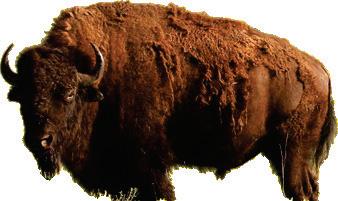
The original seed source of our plants is from wild populations found growing in Missouri. Our plants are as “wild” as we can possibly keep them.

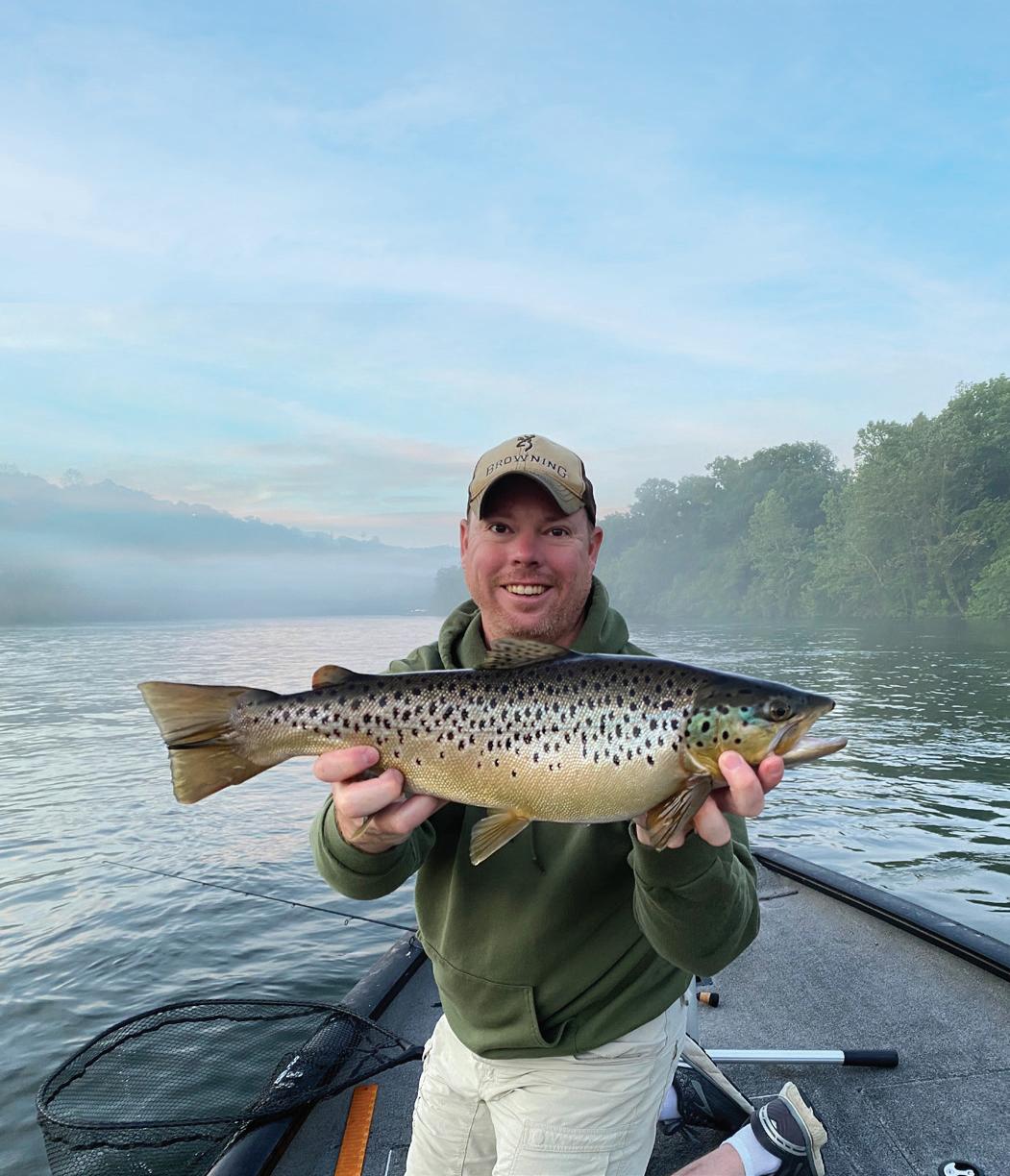


3 Flowers, Grasses, Trees, Shrubs, Vines, sedges, pond plants.

3 Plants for full sun, full shade and anywhere in between..
3 Seed, seed mixes, and custom blends.
3 Expert advice.
MAY - 2023 59
BRANSON, MISSOURI 417.334.6380 LilleysLanding.com Boat Rentals Fly & Tackle Shop Fishing Guides
Water Quality Monitoring on Jordan Creek
In October 2022, James River Basin Partnership (JRBP) staff and volunteers conducted water quality monitoring on Jordan Creek in central Springfield for the City of Springfield.

JRBP partners with the City's Department of Environmental Services as part of their outreach and education efforts for their Municipal Separate Storm System, or MS4, permit, which requires communities of 10,000 people or more to maintain a separate infrastructure that removes stormwater runoff from urban and suburban areas.
Benthic macroinvertebrates, those bottom-dwelling river critters lacking a backbone, tell us a lot about the overall health of rivers and streams. A more diverse macroinvertebrate population, one that includes macroinvertebrate species sensitive to pollution, tells us that efforts are working to protect our most valuable resource – our local water.
This theory was confirmed in the mid-2000s when the City removed South Creek in Southwest Springfield from its concrete channel and restored it with native plants and trees to create a healthy corridor. Not only did the macros diversify, but waterfowl and fish also returned.
60 CONSERVATION FEDERATION Feature Story
Stormwater runoff picks up and carries a variety of pollutants into local creeks and streams. According to Missouri Stream Team, "Since urban and suburban areas have large areas of land covered with pavements or buildings, stormwater is not allowed to soak into the ground."
Not only does this untreated water end up in our local streams, but it can also damage stream habitats and increase erosion in the process.
Jordan Creek has always been a "flashy" stream. A series of floods in the late 19th and early 20th centuries eventually caused the citizens of Springfield to support putting the Jordan in to an underground concrete "box" in the 1920s as a form of flood control.
The fact that the stream was also used as a de facto sewer made the box an "out-of-sight, out-of-mind" measure for many years. The site where John Polk Campbell established a homestead that became Springfield in the 1830s was, a hundred years later, a "death-breeding cesspool", according to the City's engineer.
A reporter and photographer for the Springfield Leader & Press attempted to find the source of the Jordan in the 1930s and reported that the stream was where "cars went to die," given the number of tires and debris littering its banks.
The local chapter of the Izaak Walton League warned in 1925 that the pollution of the Jordan was causing fish kills "by the thousands and can be scooped up in baskets in the James River", blaming oil, gas, and other foreign substances being dumped in the creek by local businesses.
But those days of "Jordan's Stormy Banks" are numbered.
The City of Springfield is planning to "daylight" Jordan Creek, removing a good portion of the 3,520 foot-long "aqueduct" in downtown Springfield and restoring it to a more natural state.
JRBP's monitoring of Jordan Creek helps establish a "before" picture as part of the daylight project. The City hopes to see population diversity as they did in South Creek.
Not only will this beautify downtown Springfield, but it will also help reduce flooding, promote native Ozark landscapes, and create greenspace that can be enjoyed by all.
Both the Watershed Committee of the Ozarks and JRBP have been giving tours of the Jordan Creek "box" for many years, drawing attention to the effects of nonpoint source pollution in stormwater runoff.


It's surreal to think that the tour's days may be numbered, but at the same time, it's satisfying to see the Jordan return to a more natural state.
And, what goes into Jordan's waters eventually ends up in the James River and, after a long journey, all the way to the Gulf of Mexico. This makes it even more important that the Jordan rises again out of its concrete tomb.
Todd Wilkinson
MAY - 2023 61 Feature Story
JRBP staff and volunteers conduct macroinvertebrate monitoring along historic Jordan Creek in downtown Springfield, October 2022. (Photos: Courtesy of Todd Wilkinson)
Capt. Scott’s Raccoon
“..And I never was satisfied at his givin’ in so easily at last. Perhaps he had heard of my preparations to hunt him the next day so he had just come in, Like
While listening to The Bear Grease podcast, I heard the host Clay Newcomb, recite the above epigram. The phrase, “like Captain Scott’s raccoon” rang a bell with me since I had just heard it mentioned in another unrelated historical account. I hadn’t previously noticed the phrase and wondered, “who was this Scott character”?
According to the City of Fredericksburg, Texas website, Martin Scott was born in 1788 in Vermont and enlisted with the Green Mountain Boys in the War of 1812. Scott spent most of his time in the army at forts in the northwest. (Indiana, Ohio, Michigan, Illinois, and Wisconsin today).

After he became an officer, those that served under him described him as being someone who “was an interesting man, with strong, alert, athletic figure, bright, eager, keen grey eyes, and ruddy face, bronzed by long exposure. He was a great disciplinarian.” Others said Martin Scott always had a good horse and a pack of hunting dogs. By age 12 he had killed his first bear, and by the 1820’s Scott had a reputation for being the best shot in the army. This at a time when many of those serving in the military grew up with a rifle in their hands. To be thought of among these straight-shooting frontiersmen as “the best” was high praise. Scott did not drink or gamble, leading some to believe he was anti-social.

62 CONSERVATION FEDERATION Feature Story
Captn Scott’s ‘coon….”
- Thomas Thorpe 1841, The Big Bear of Arkansas
But he could shoot. One of the things Scott demonstrated to achieve his status among peers is reported by a fellow soldier in an 1866 book. Randolph Barnes Marcy, U.S. Army Inspector General, Retired, in his, Thirty Years of Army Life on the Border, described Scott’s marksmanship by writing:
“His reputation for accurate rifle and pistol shooting was well deserved; and I am not aware that he was ever excelled, if indeed he was ever equaled, by any of his contemporaries. One of his performances with the pistol, which I have often heard vouched for by officers who had witnessed it, and which appears to me to require more skill in the use of the arm than any other feat I have heard of, was in taking two potatoes, throwing them into the air successively, and putting a pistol-ball through both of them as they were coming down.” Impressive indeed.
Scott gained this legendary status in the 1830’s and 40’s during a time when the southern storytelling genre was born. The later success of published tall tales like “The Big Bear of Arkansas” by Thomas Thorpe in 1841 was so great, that some historians have named certain southwestern contemporaries of Thorpe’s, the Big Bear school of humorists. It eventually influenced authors like Mark Twain and comedians of our time like the late Jerry Clower. (For more on The Big Bear of Arkansas, Listen to episode 94 of The Bear Grease Podcast).
Bear hunters, ‘coon hunters, hound men and outdoor folks in general like a good hunting story. The soldiers of Scott’s acquaintance were used to some whoppers. Scott apparently liked to tell one about himself, in the spirit of the times, involving a raccoon that had been treed by a dog in a very tall cottonwood.
An 1832 version of the oft-repeated raccoon hunt story appeared in the American Turf Register and Sporting Magazine and describes the famous tale eluded to by our bear hunter, giving it a Little Rock, Arkansas byline. The story says both Captain Scott and a Lieutenant named Van Swearengen stationed at old Fort Smith on the Arkansas river liked to hunt. He described Lt. Swearengen as a “notoriously bad shot.”
“It appears that a dog had treed a racoon in a very tall cottonwood, and after barking loud and long to no purpose, the coon expostulated with him, and endeavoured to convince him of the absurdity of spending his time and labour at the foot of the tree, and assured him that he had not the most distant idea of coming down the tree, and begs him as a fellow creature to leave him to the enjoyment of his rights. The dog replied naturally, but I fear not, in the same conciliatory style of the coon, but threatened him with the advent of some one that would bring him down. At this moment a cracking in the cane indicated the approach of some individual; the coon asked the dog who it was? The dog replied with some exultation, that it was Lieutenant Van Swearengen—the coon laughed, and he laughed with a strong expression of scorn about his mouth: “Lieutenant Van Swearengen, indeed, he may shoot and be d—nd.” Van Swearengen made five or six ineffectual shots, and left the coon, to the great discomfiture of the dog, still unscathed, and laughing on the top of the tree. The dog smothered his chagrin by barking louder and louder, and the coon laughed louder and louder, until the merriment of the one, and the mortification of the other, was arrested by the approach of some other person. The coon inquired who it was, the dog answered with quickness that it was Scott:—Who? asked the coon, evidently agitated! Why, Martin Scott, by G—d. The coon cried in the anguish of despair, that he was a gone coon; rolled up the white of his eyes, folded his paws on his breast, and tumbled out of the tree at the mercy of the dog, without making the least struggle for that life which he had, but a few minutes before, so vauntingly declared and believed was in no kind of danger.”
And so the saying, “Like Capt Scott’s Raccoon” was born. If someone just gave up in some endeavor or surrendered, or turned themselves in to the authorities, it was said he did so like Captain Scott’s raccoon. Now you know.
MAY - 2023 63 Outdoor News
Kyle Carroll
Left - Searching for Tree Tops by David Wright. Right - One of Jackson’s Men by Kyle Carroll.







64 CONSERVATION FEDERATION Quaker Windows & Doors Freeburg and Eldon, MO quakerwindows.com THE FABRIC OF MISSOURI 100% AMERICAN MADE & OWNED STARLINEBRASS.COM | 1 ( 800 ) 280-6660 PURCHASE FROM YOUR FAVORITE RELOADING SUPPLIER OR ORDER FACTORY DIRECT. • Superior mast production • Greater survivability • Faster growth Bucks’ Unlimited Oaktm is a trademark owned by the University of Missouri (“MU”) for a tree developed at MU with the support of Forrest Keeling Nursery. Forrest Keeling Nursery is the exclusive licensee for this product. Wildlife are wild about... 800 - FKN -2401 • (573) 898-5571 • forrestkeeling.com













MAY - 2023 65 Proud to support our outdoor heritage Missouri’s Electric Cooperatives missouriwine.org ® SMOKEHOUSE.COM 1-800-624-5426 32819 HIGHWAY 87 | CALIFORNIA, MISSOURI SMOKED MEATS — SINCE 1927 — Ad-simple_'22.indd 1 3/7/22 10:43 AM


















66 CONSERVATION FEDERATION CONSERVATION LEADERSHIP CORPS A program of the Conservation Federation of Missouri www.confedmo.org/clc OZARK BAIT&TACKLE • LIVE BAIT • TACKLE • PERMITS • ARCHERY • GUNS • AMMO VERSAILLES, MO 573-378-2220 VERSAILLES, MO 573-378-2220 L AURIE, MO 573-374-6065 L AURIE, MO 573-374-6065 GRAVOIS MILLS, MO *Storage Only* GRAVOIS MILLS, MO *Storage Only* w w w. e d g a r s s p o r t s . c o m w w w. e d g a r s s p o r t s . c o m 3 0 ’ & 4 0 ’ S t o r a g e U n i t s 3 0 ’ & 4 0 ’ S t o r a g e U n i t s You’ve got it bagged with legendary Hodgdon powders. Phone 913-362-9455 www.hodgdon.com H170-044538-6_MOWildlifeGuide_Ad.indd 1 6/13/16 4:30 PM Free Hot Breakfast Free Hot Food & Cold Beverages at 5:30 Kickback Free Wi-Fi Throughout the Hotel 100% Satisfaction Guaranteed DRURYHOTELS.COM 800-DRURYINN CFM MEMBERS RECEIVE RATES DISCOUNTED AT 10 %

Planning Your Future? Include the Conservation Federation of Missouri in your estate plans. Leave a legacy for the natural resources and traditions you have valued throughout your life. Make CFM a beneficiary of your will, trust, life insurance policy, or retirement plan. Any amount helps preserve Missouri’s resources and natural history for generations to come. What will your legacy be? Call 573-634-2322 to find out more information.
To update your contact information or address, please notify us at:







Conservation Federation 728 W. Main Jefferson City, MO 65101
573-634-2322. Bass Pro Shops® is proud to serve the sportsmen and women of Missouri. Since our doors first opened in 1972, we have remained dedicated to the conservation and enjoyment of our resources in the state we call home. Proud Partner of Learn more at basspro.com/conservation GEAR UP AND GET OUT START YOUR NEXT ADVENTURE HERE basspro.com @ BP231017816
or call




















































































 Scan to register
Scan to register





 Larry Whiteley
Larry Whiteley






















































































































